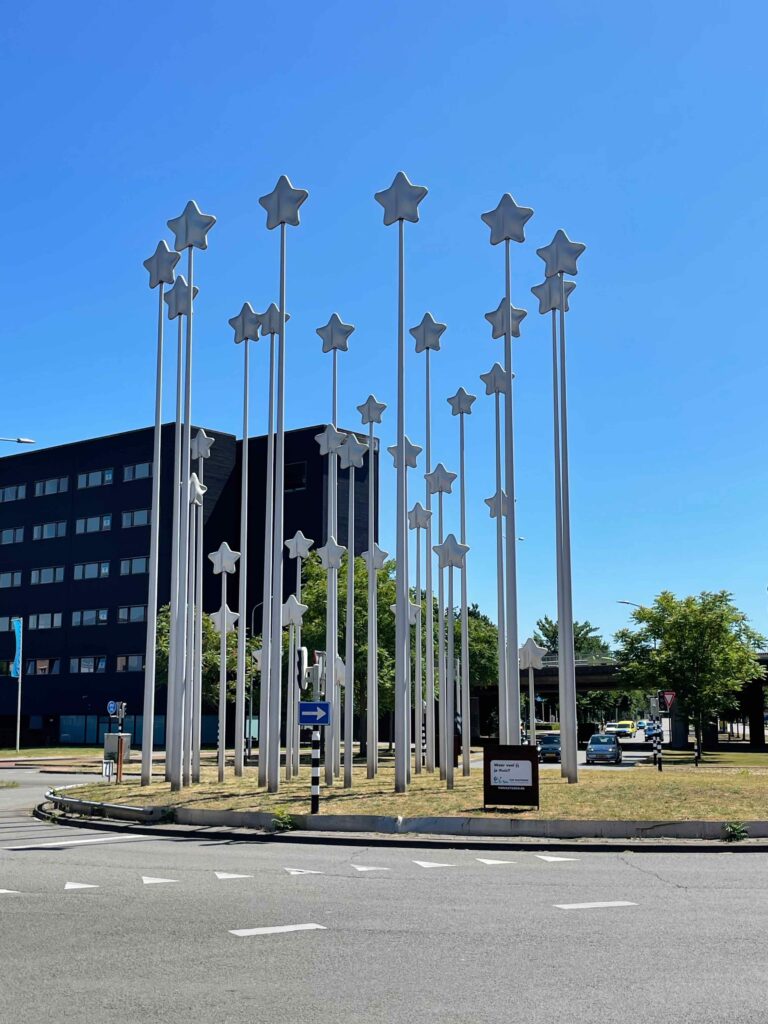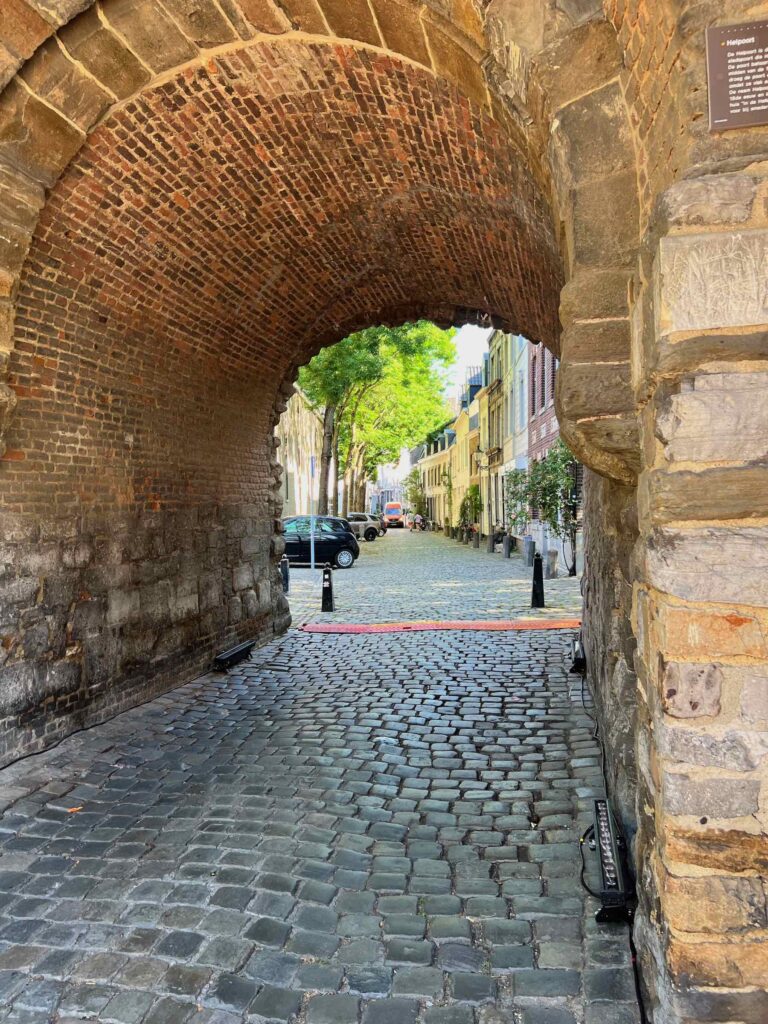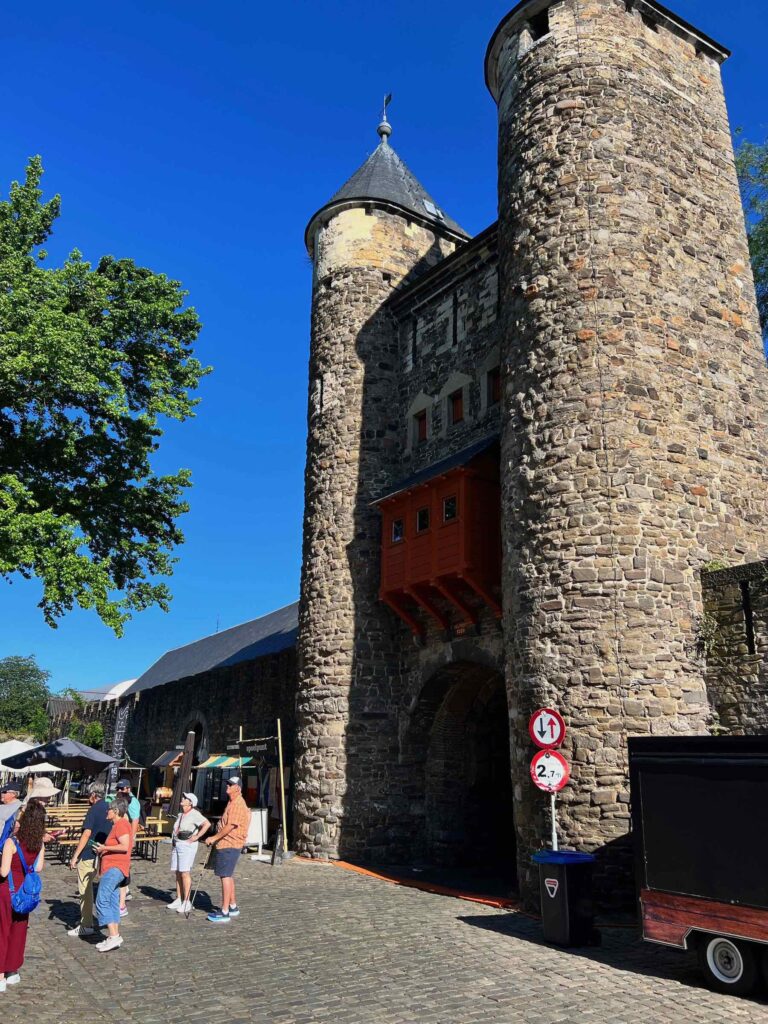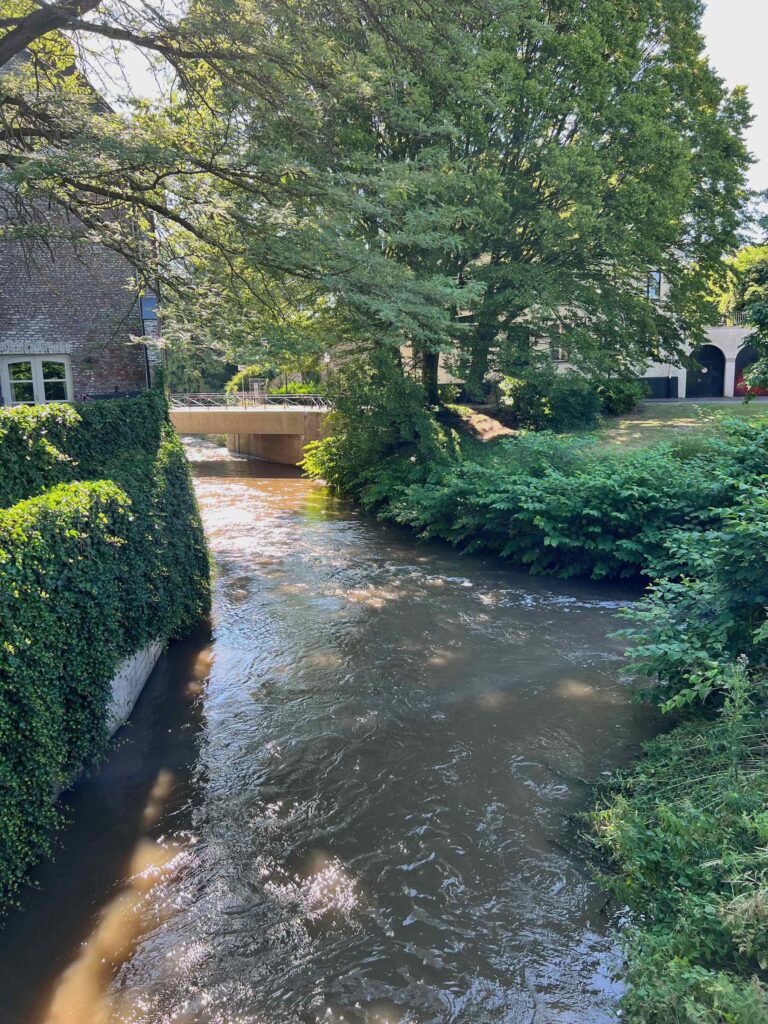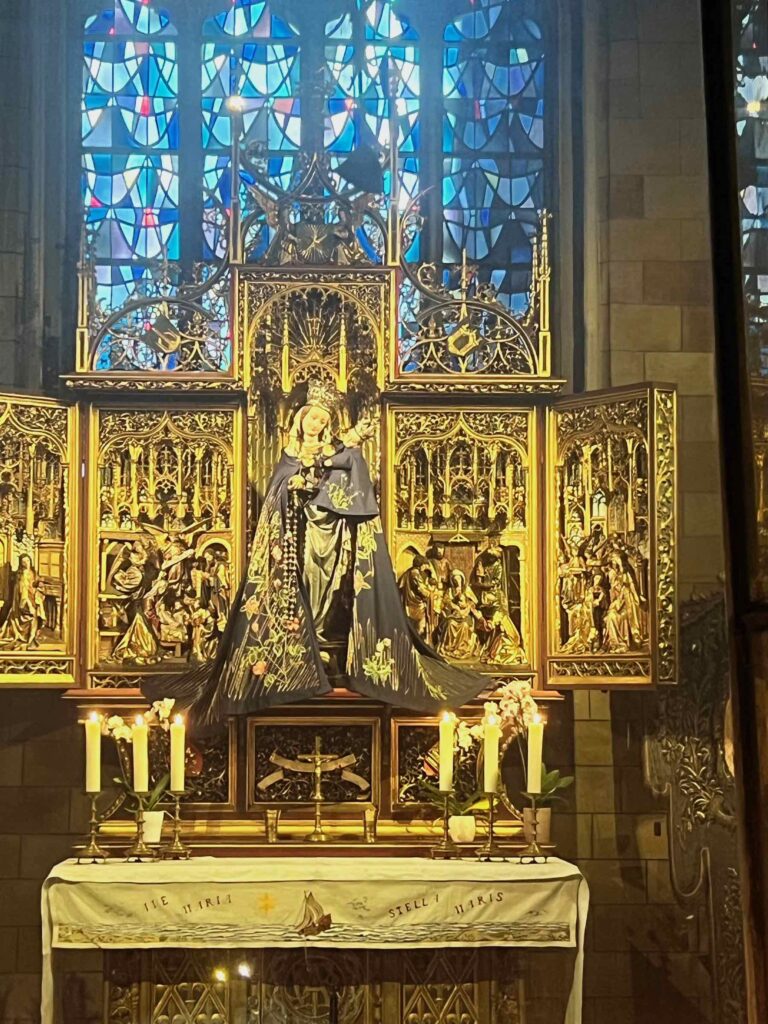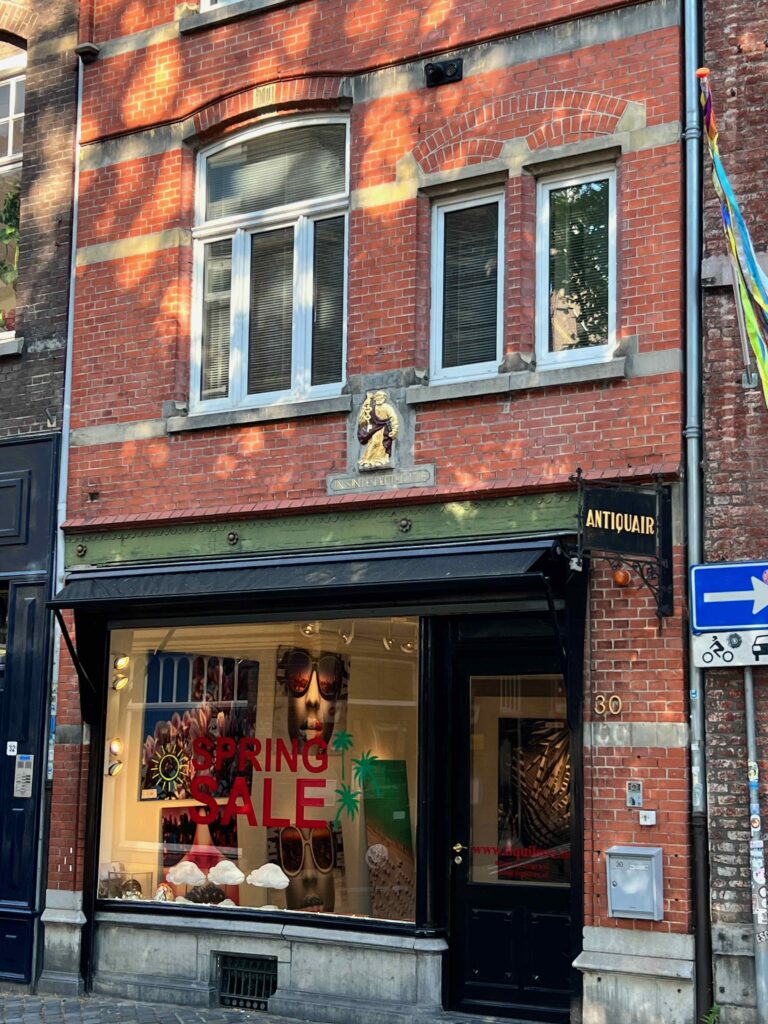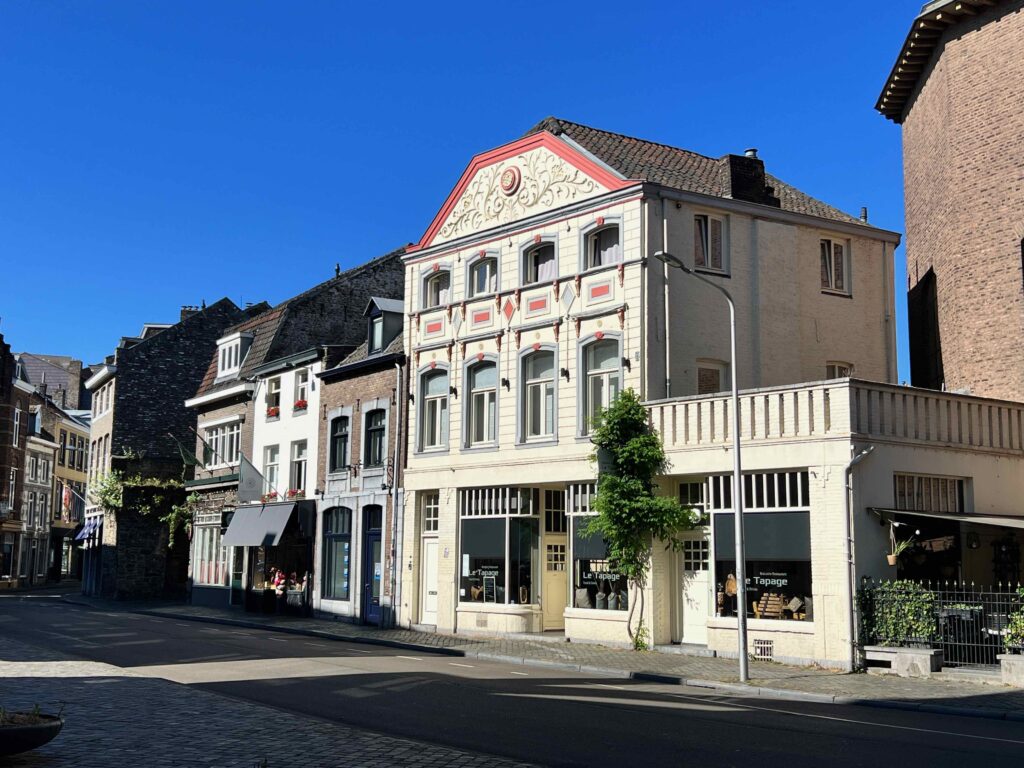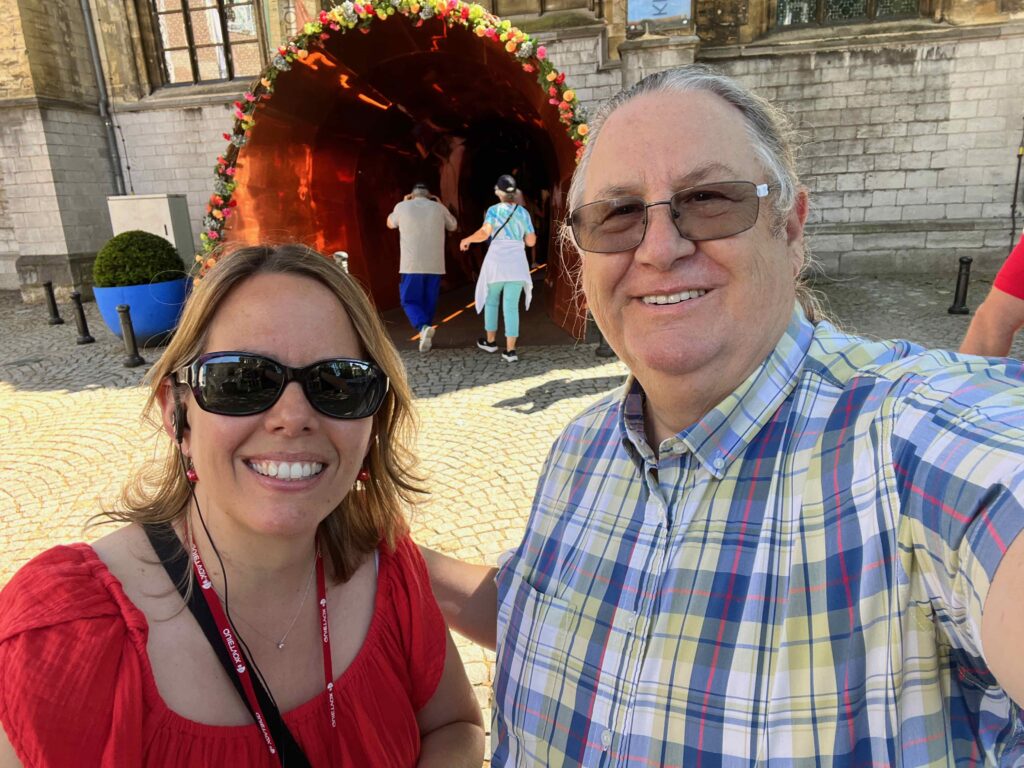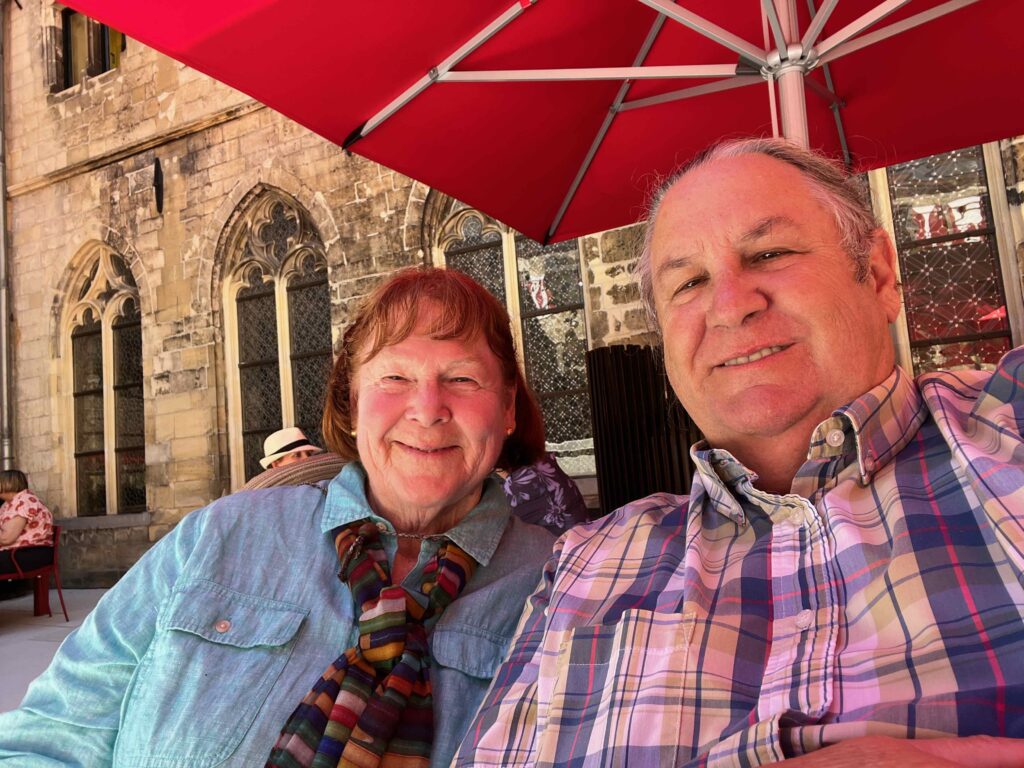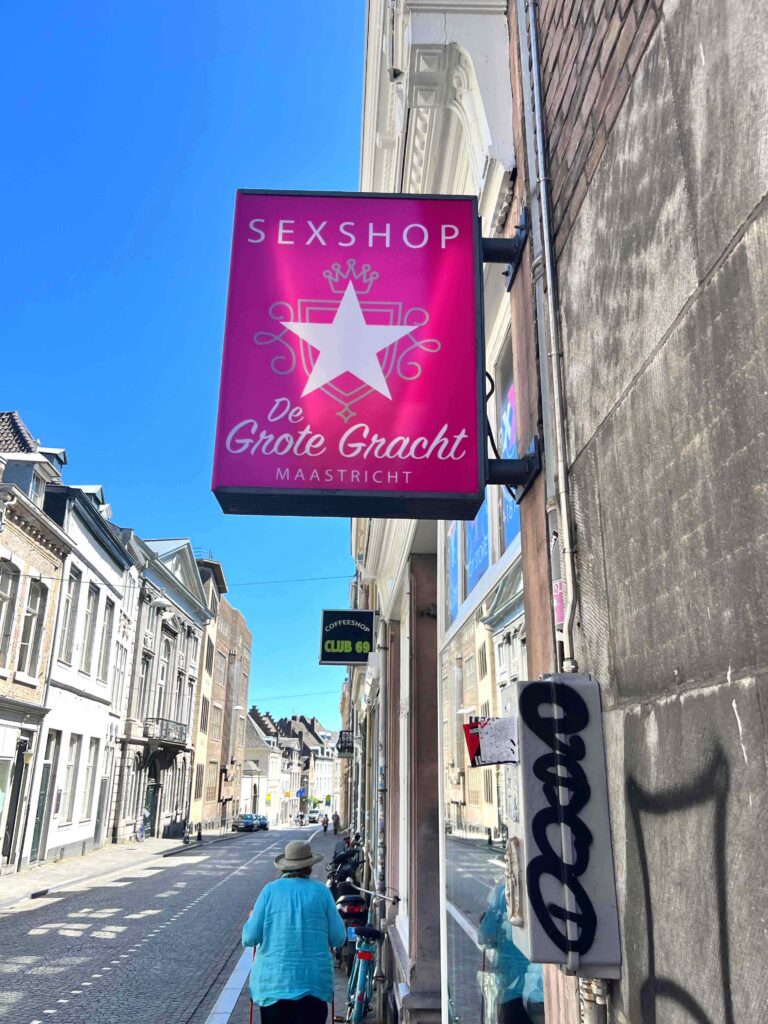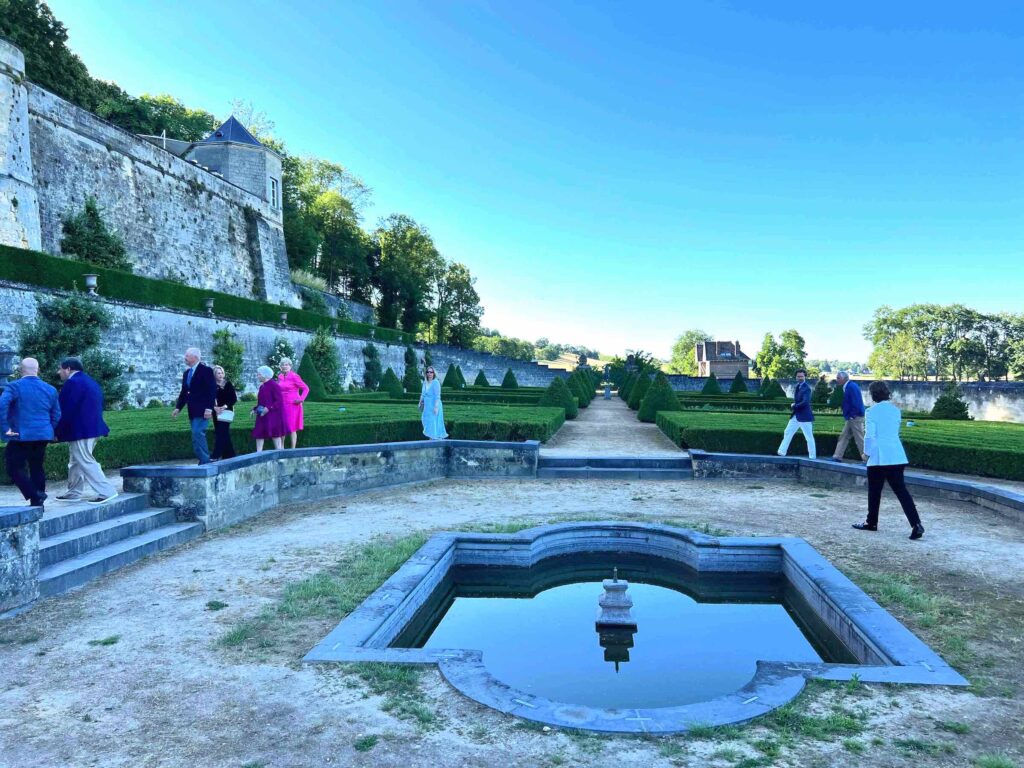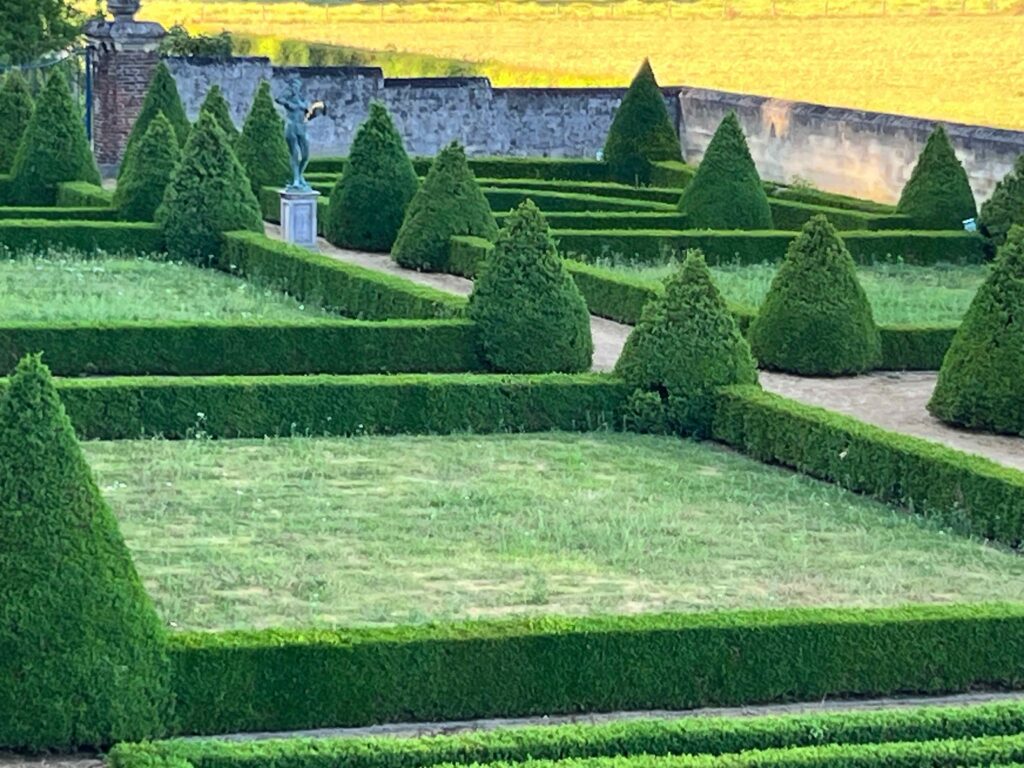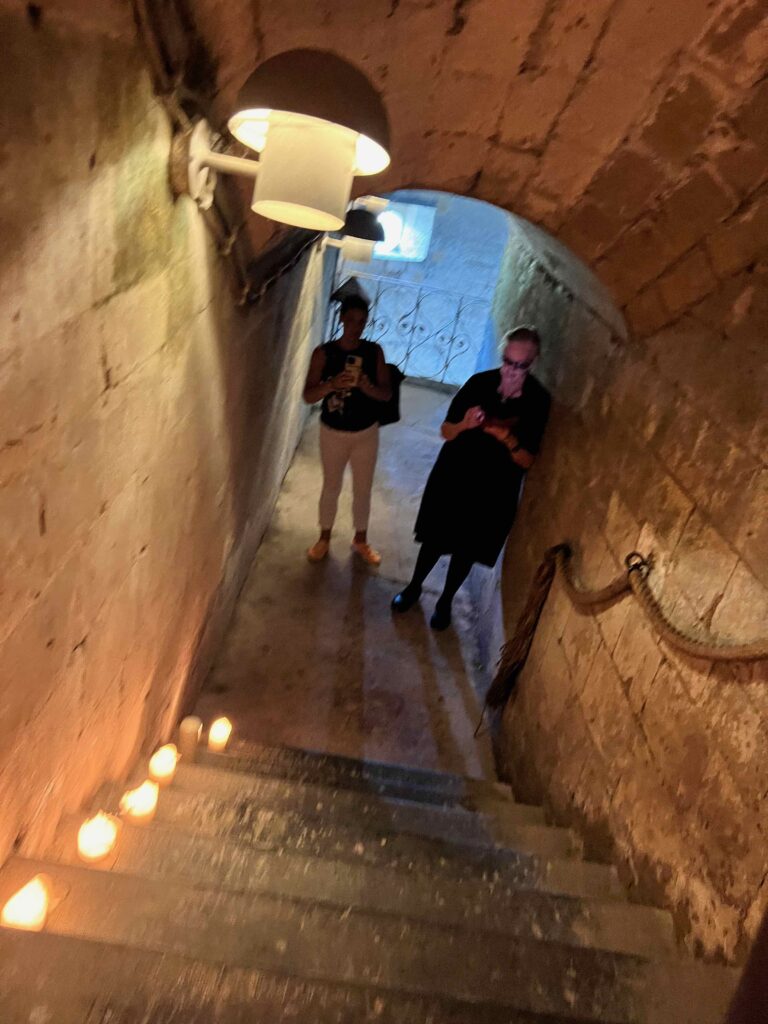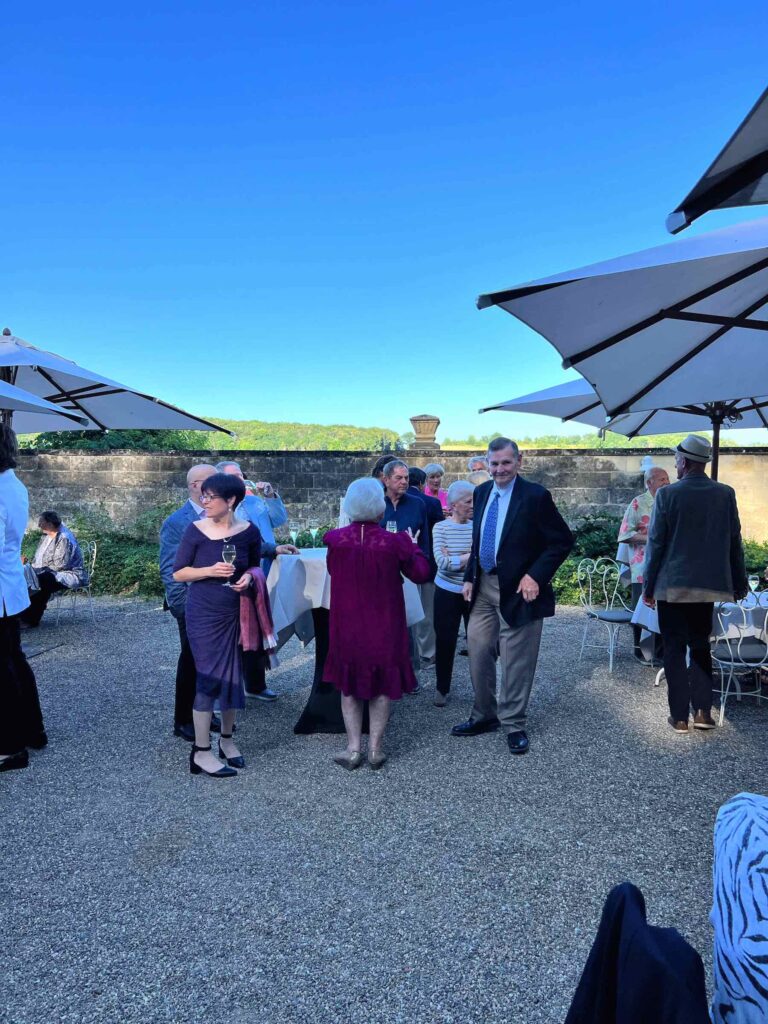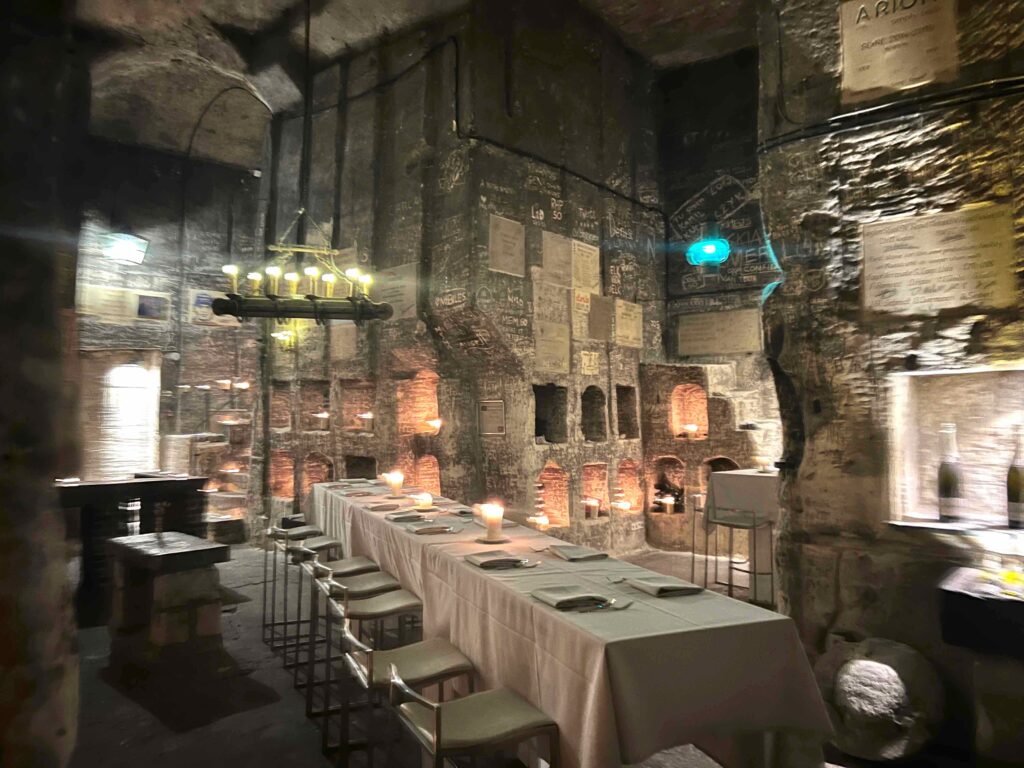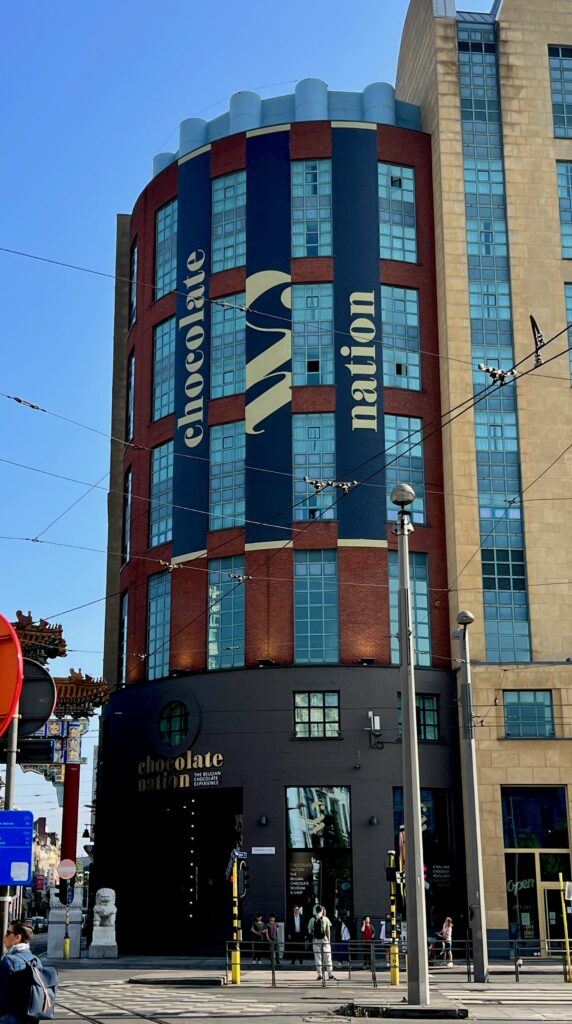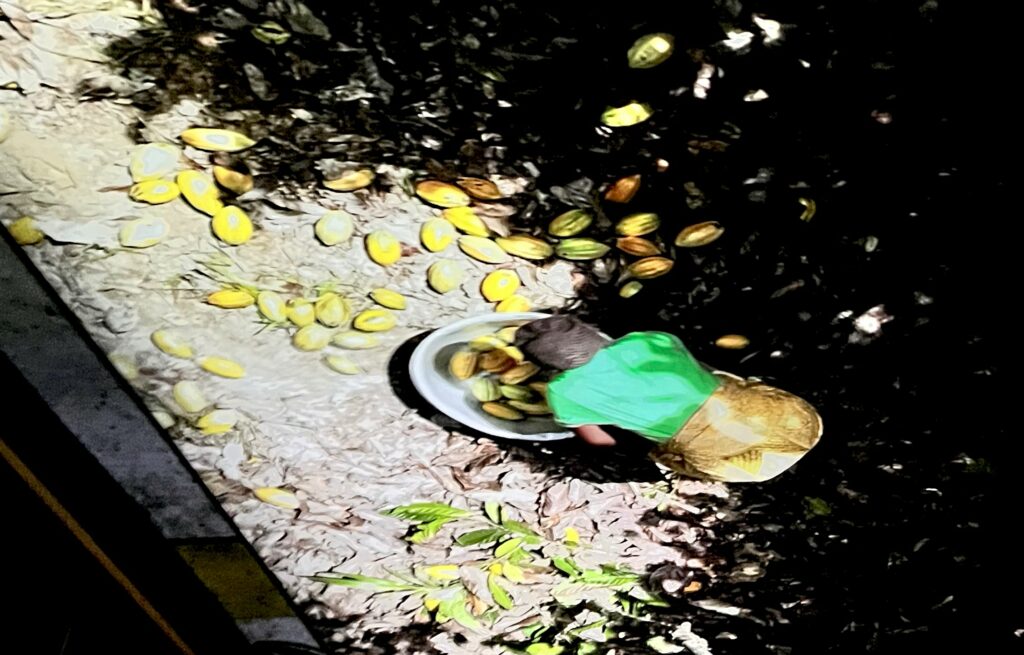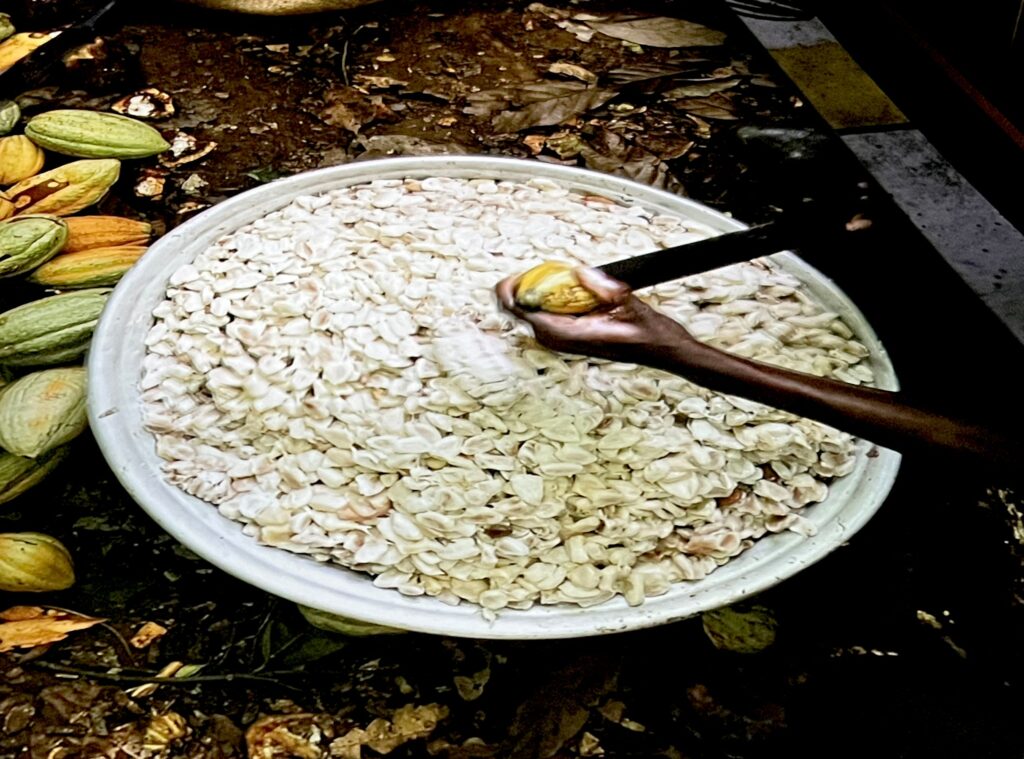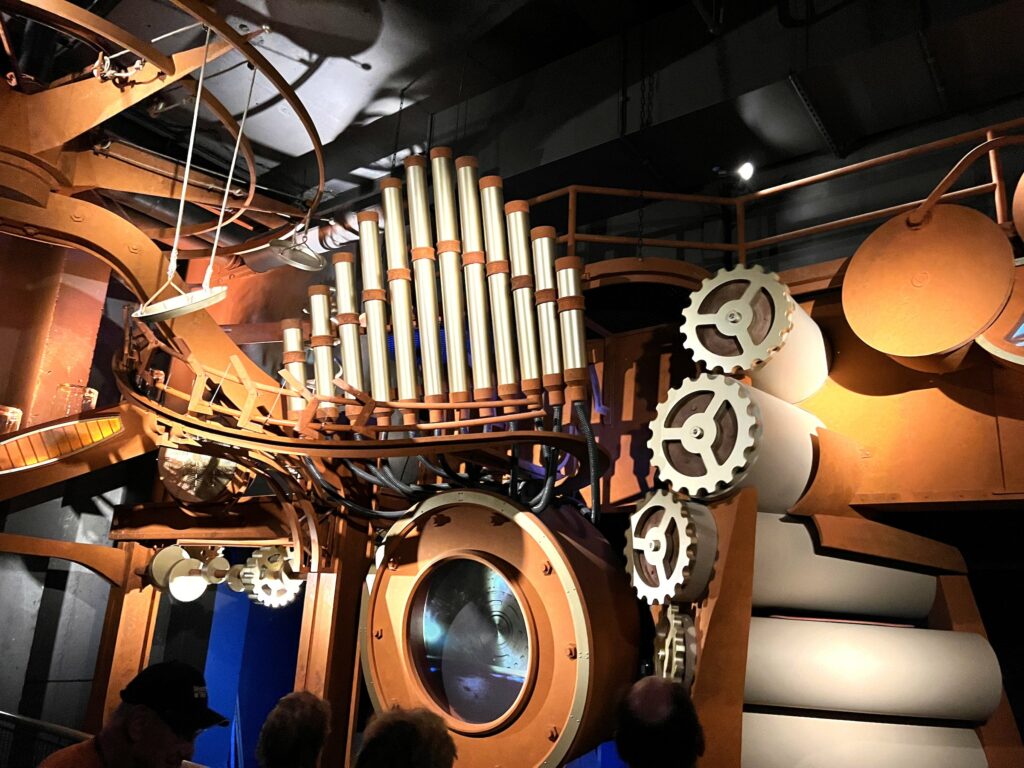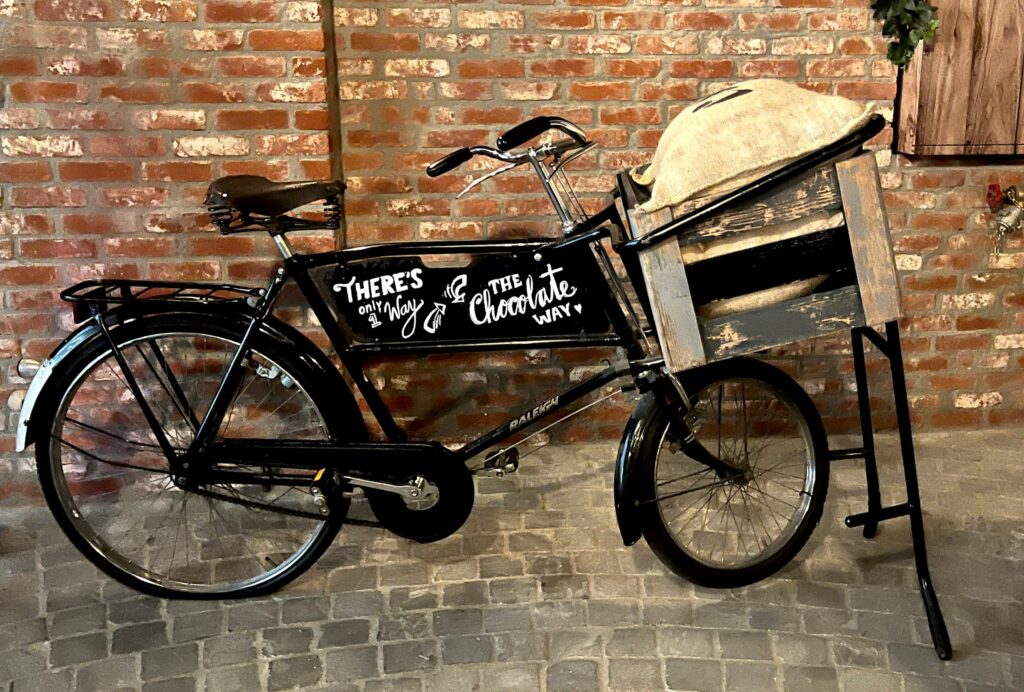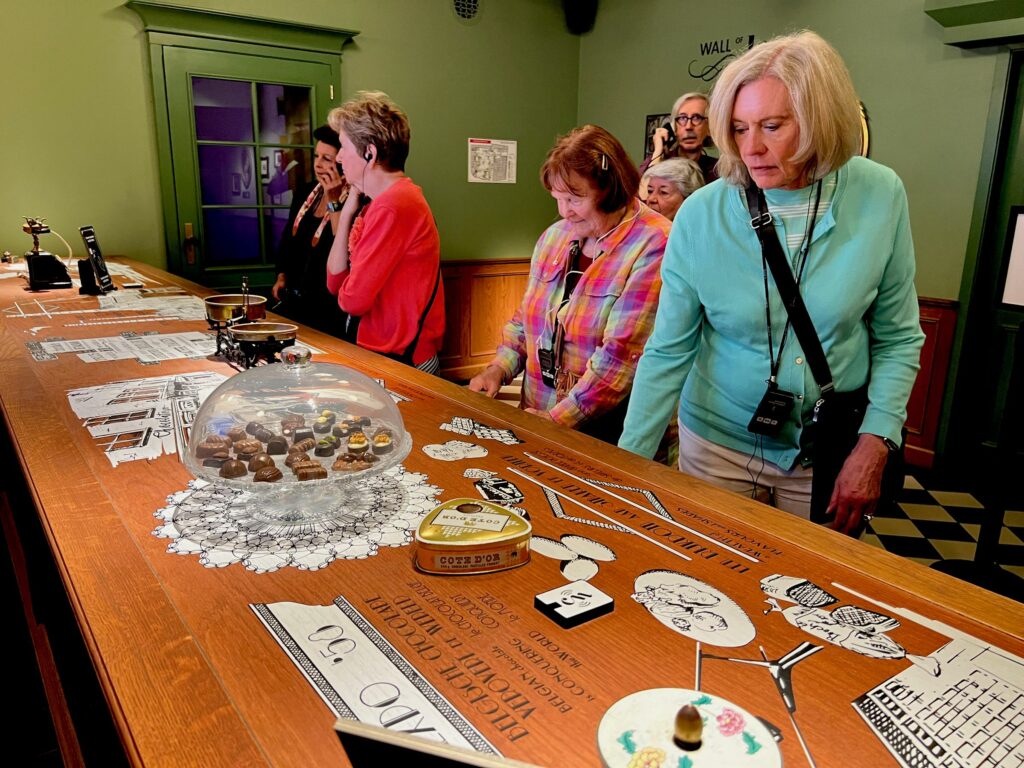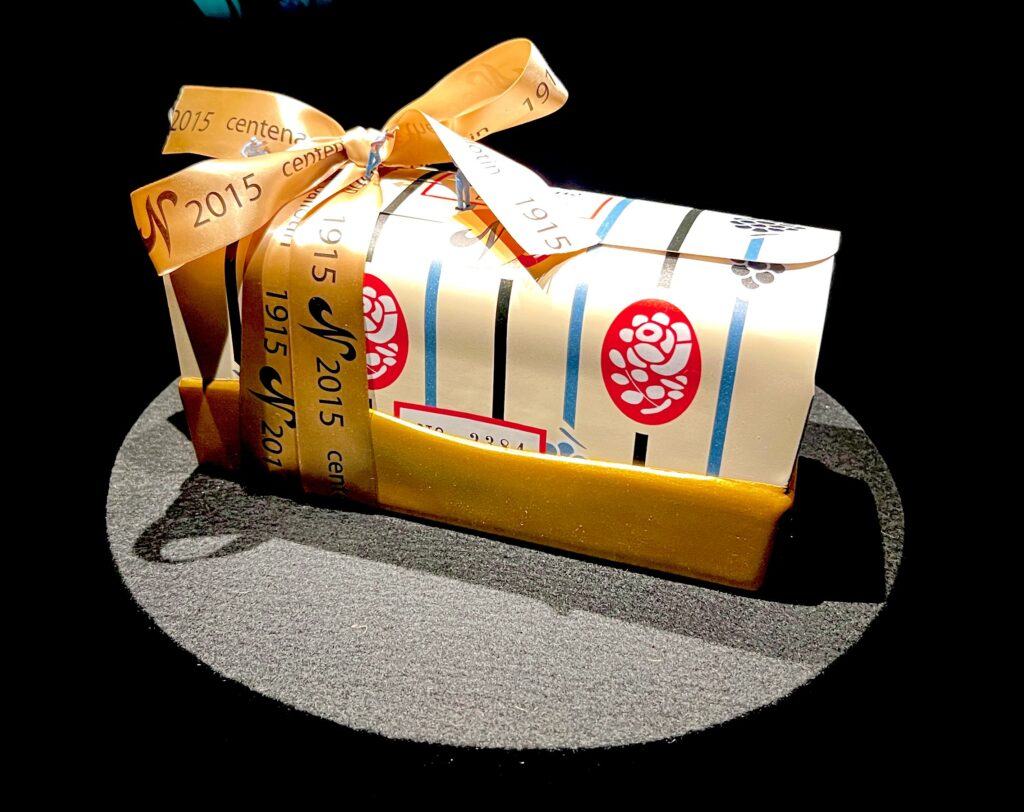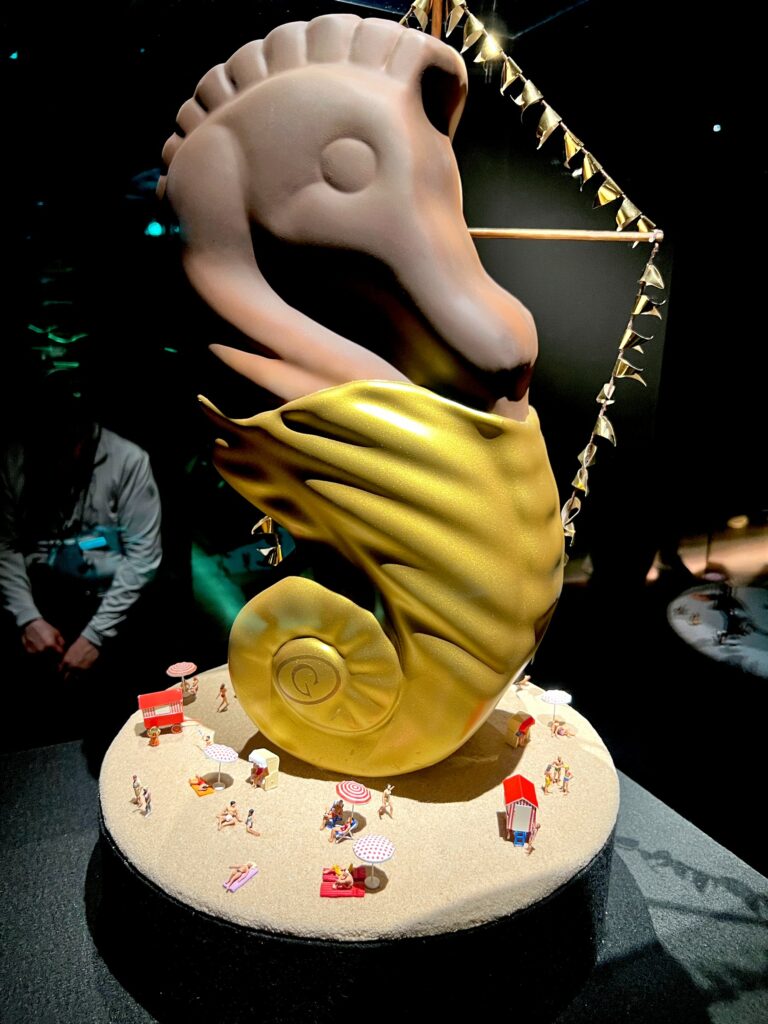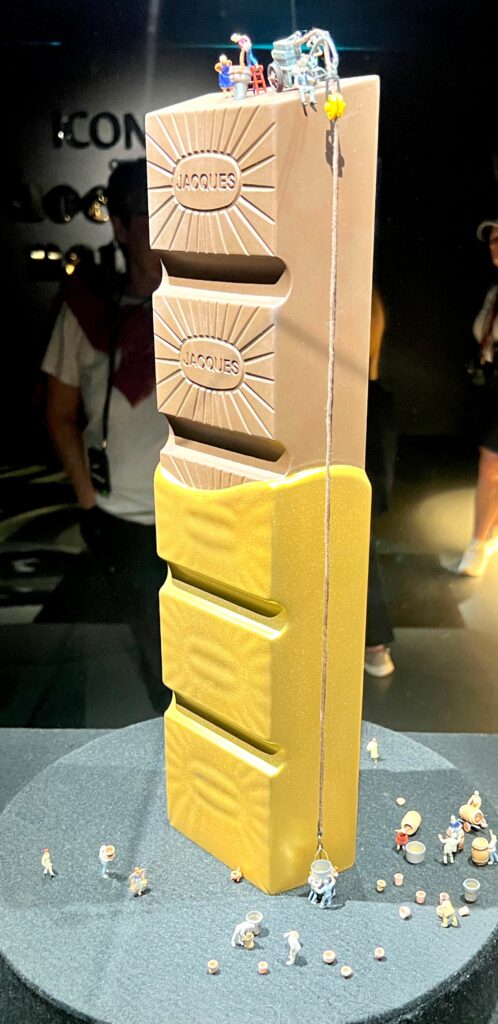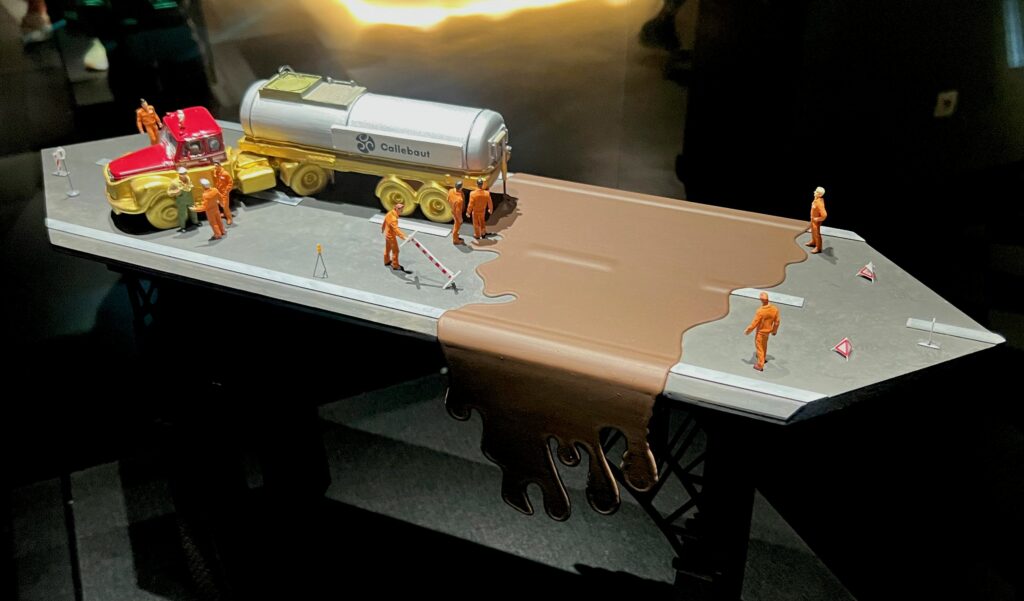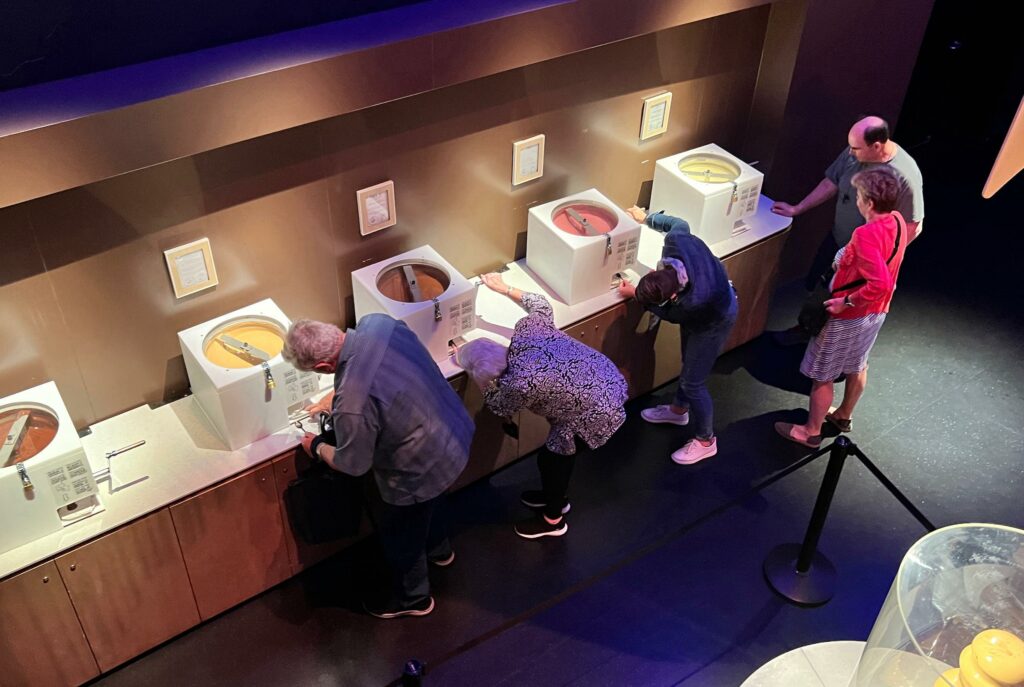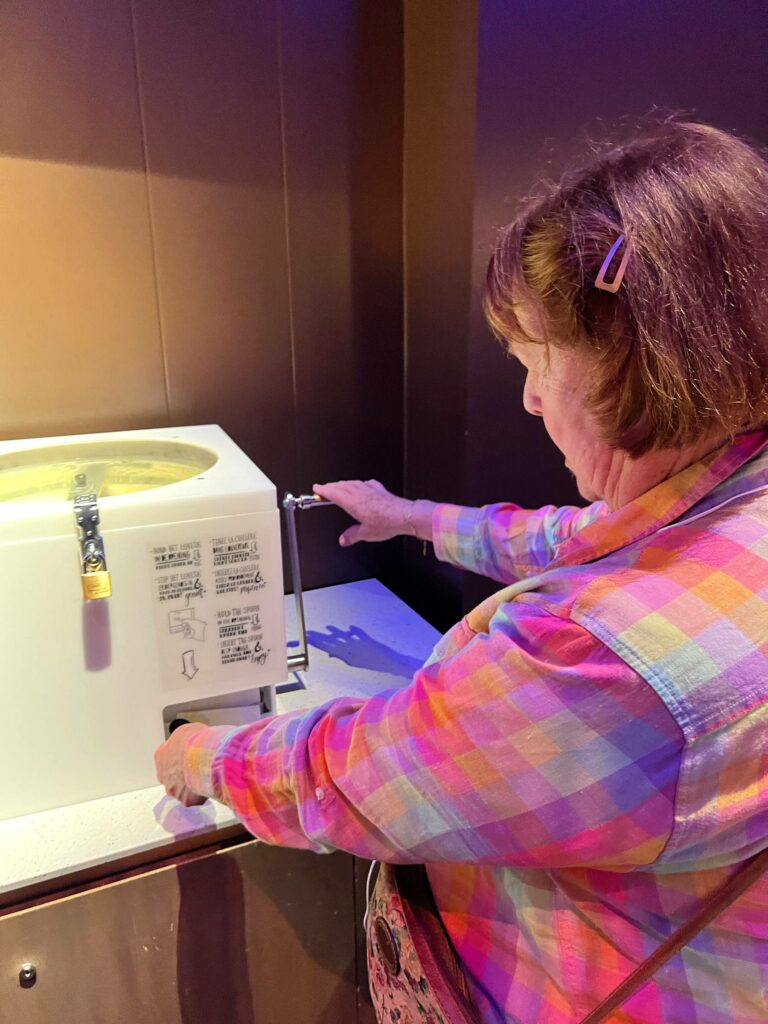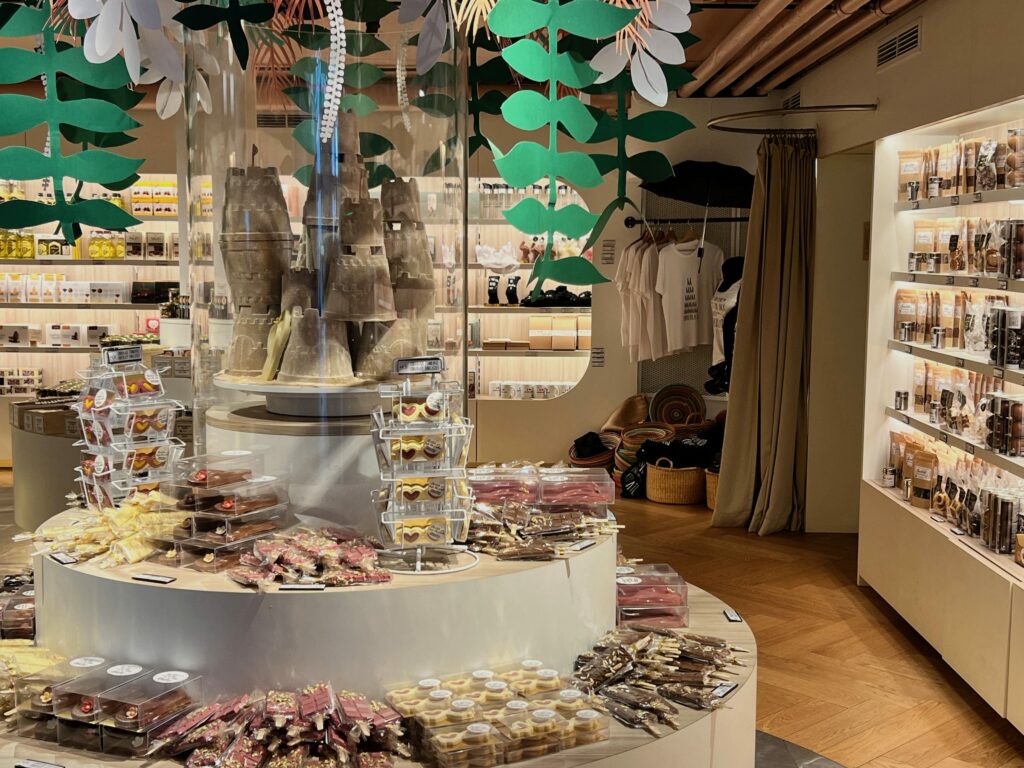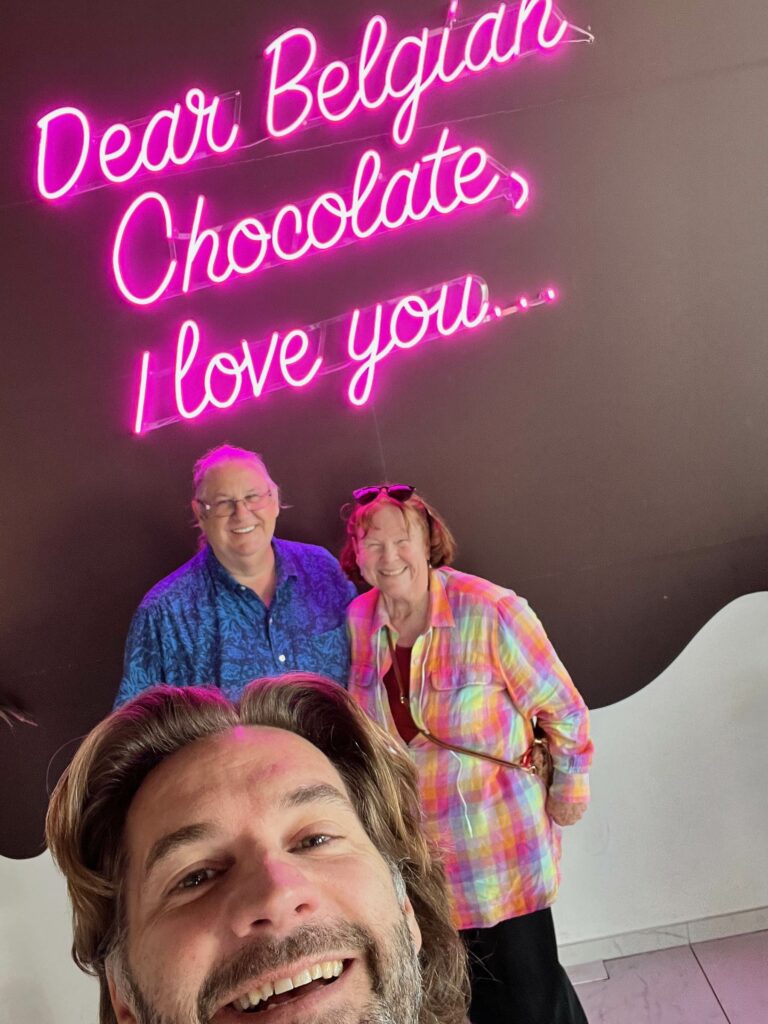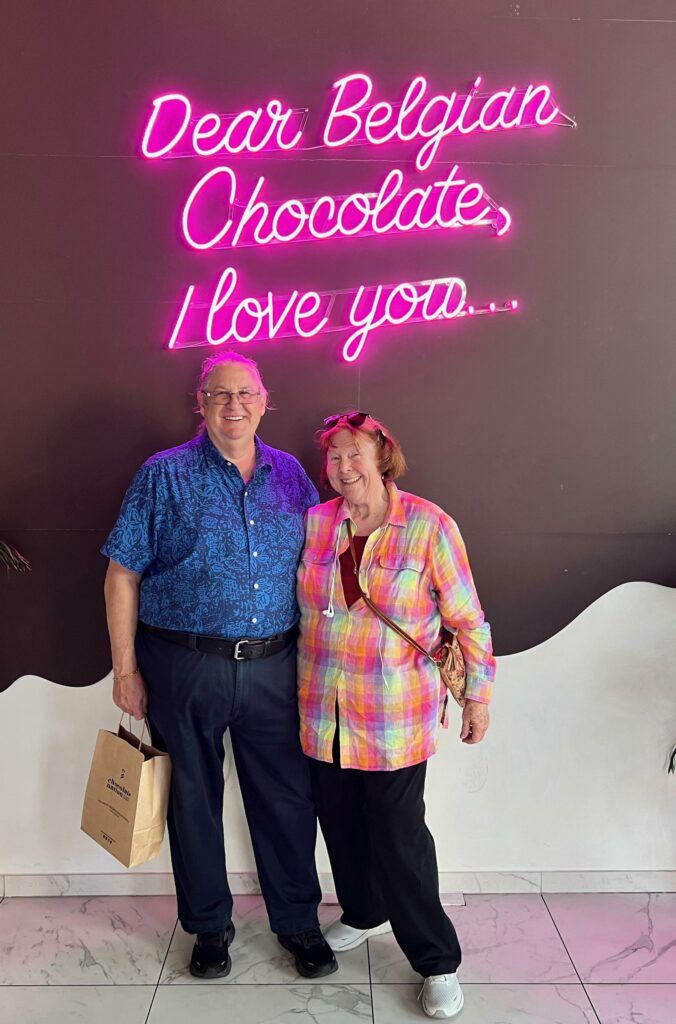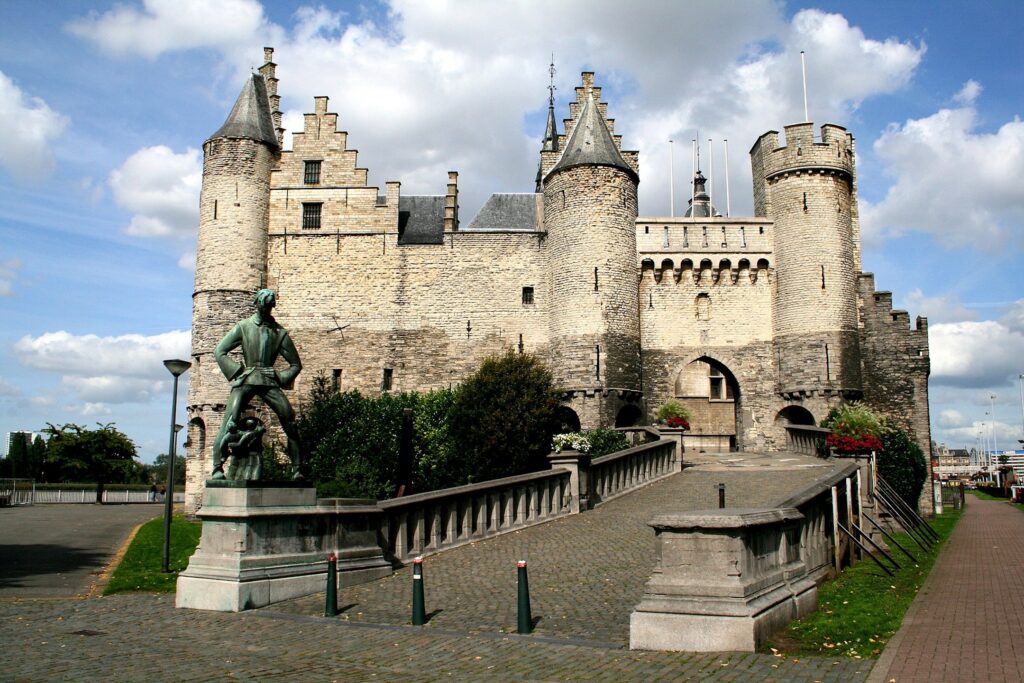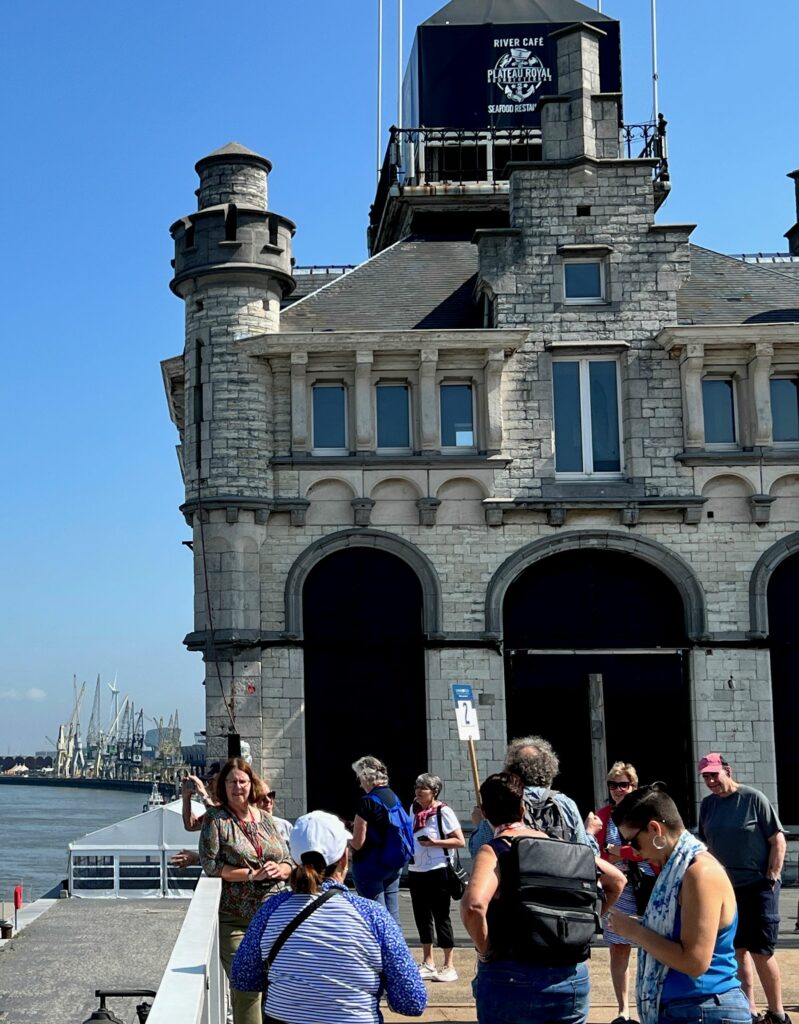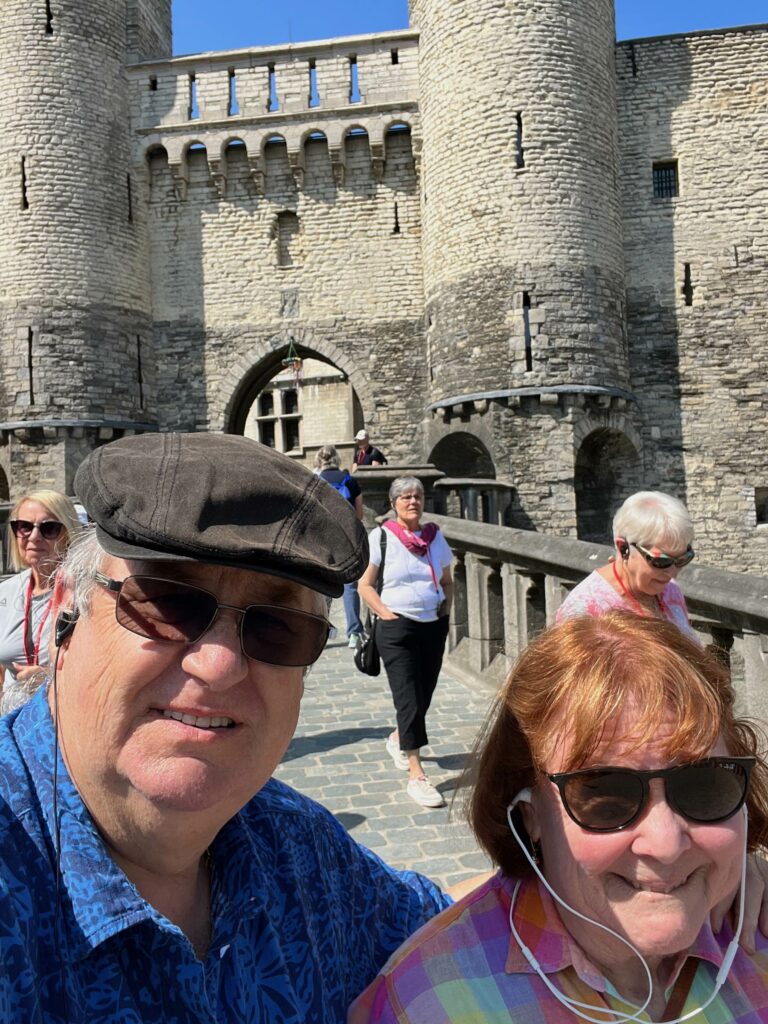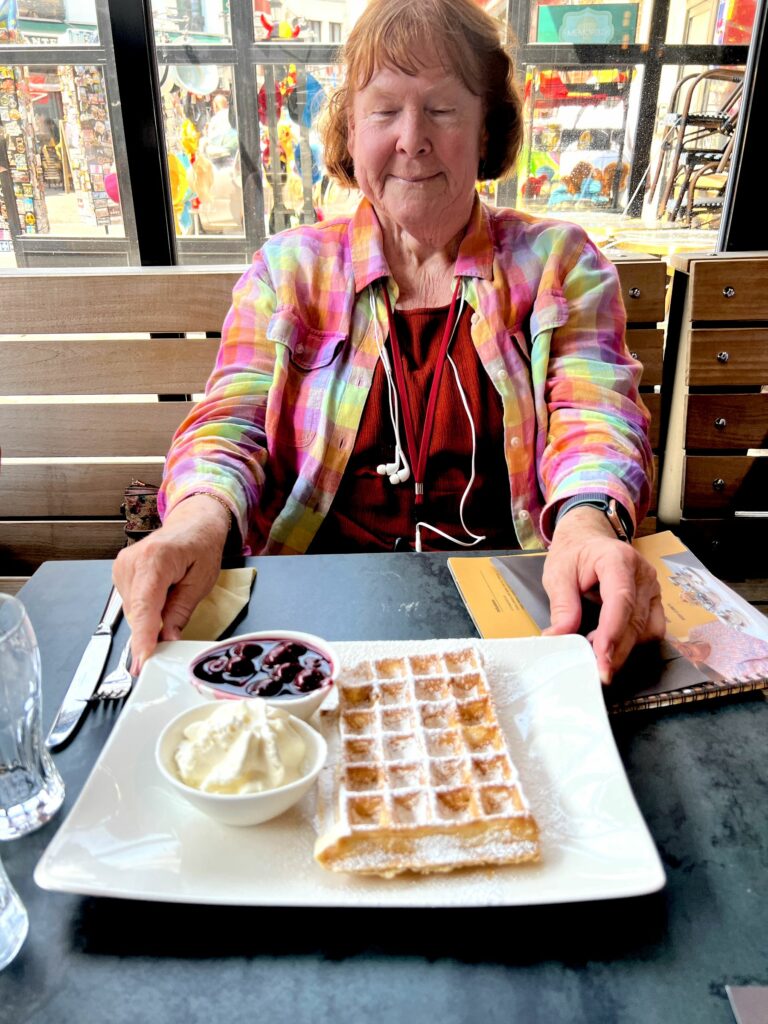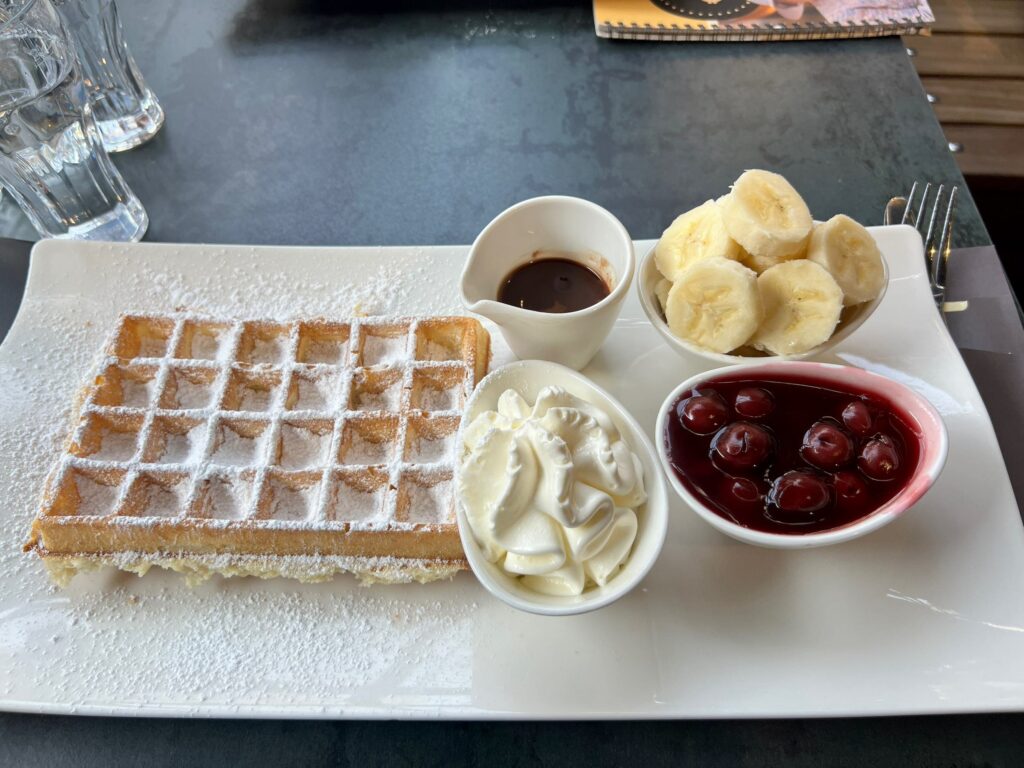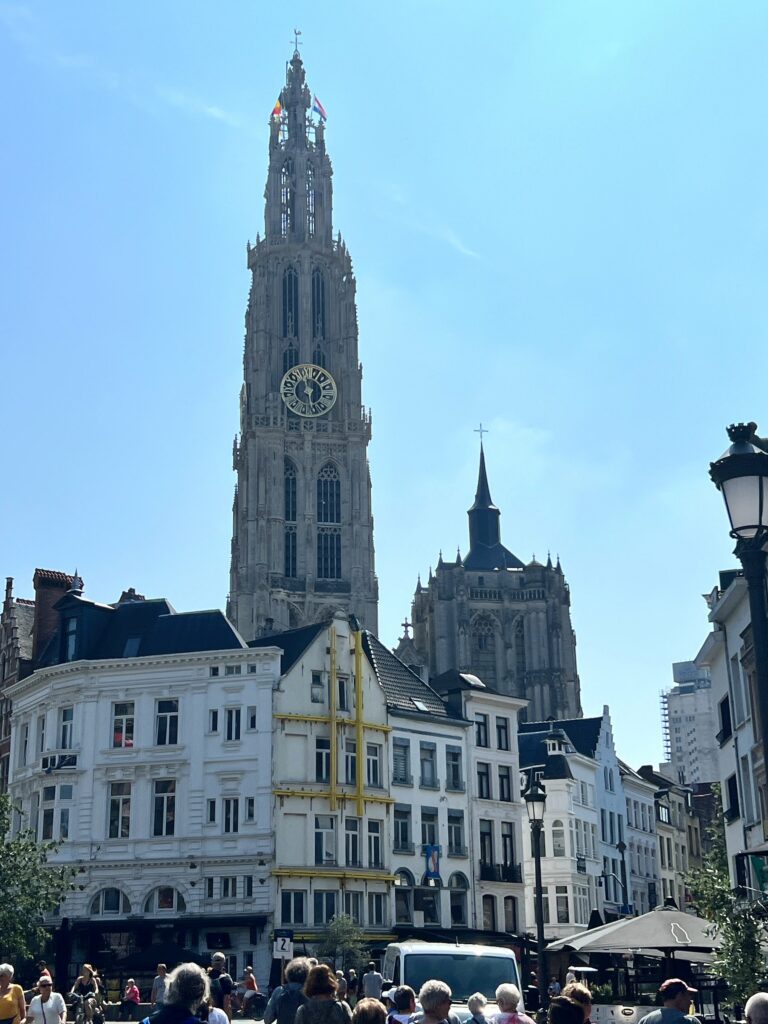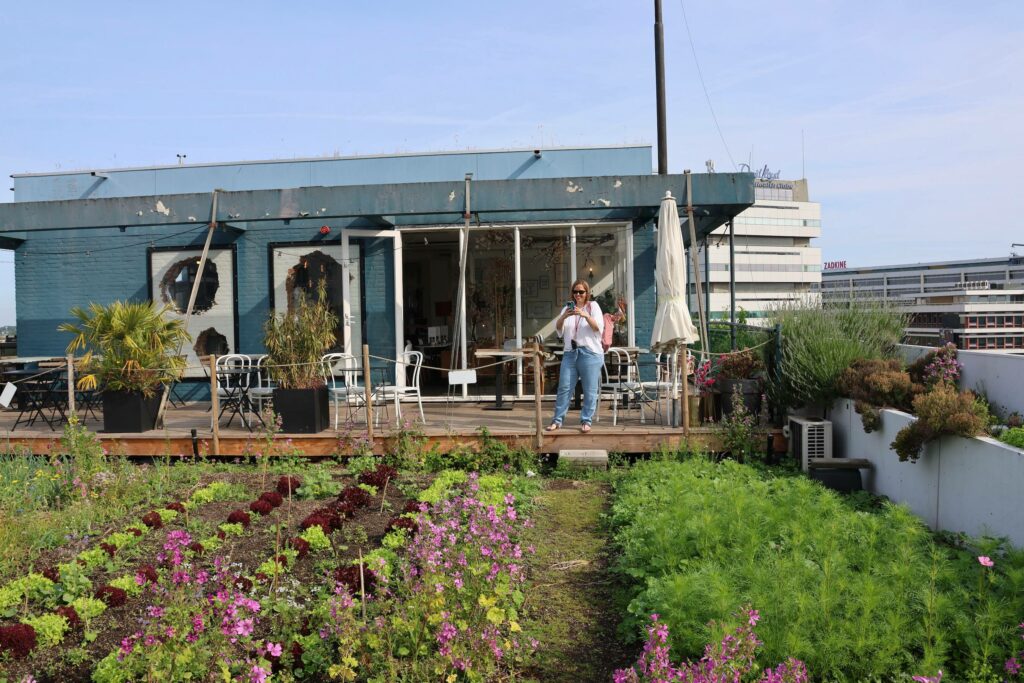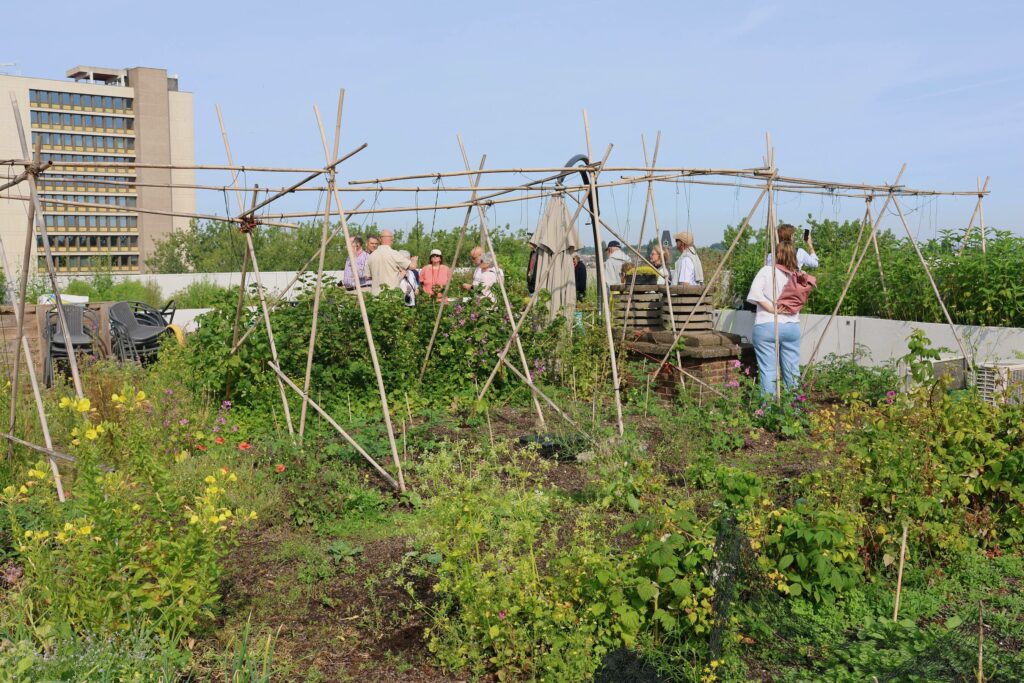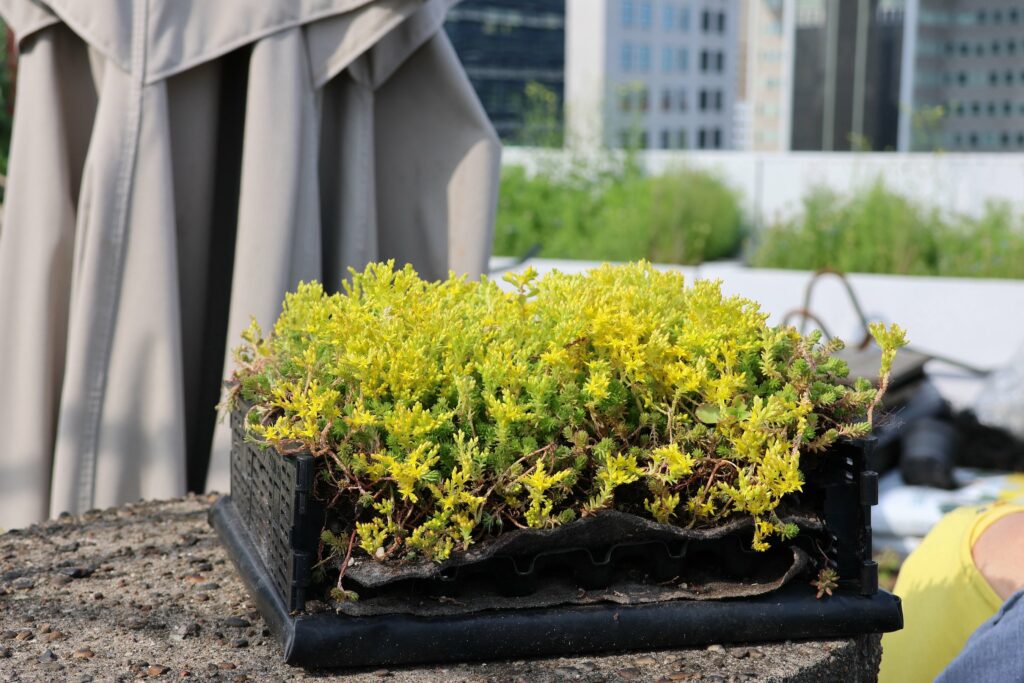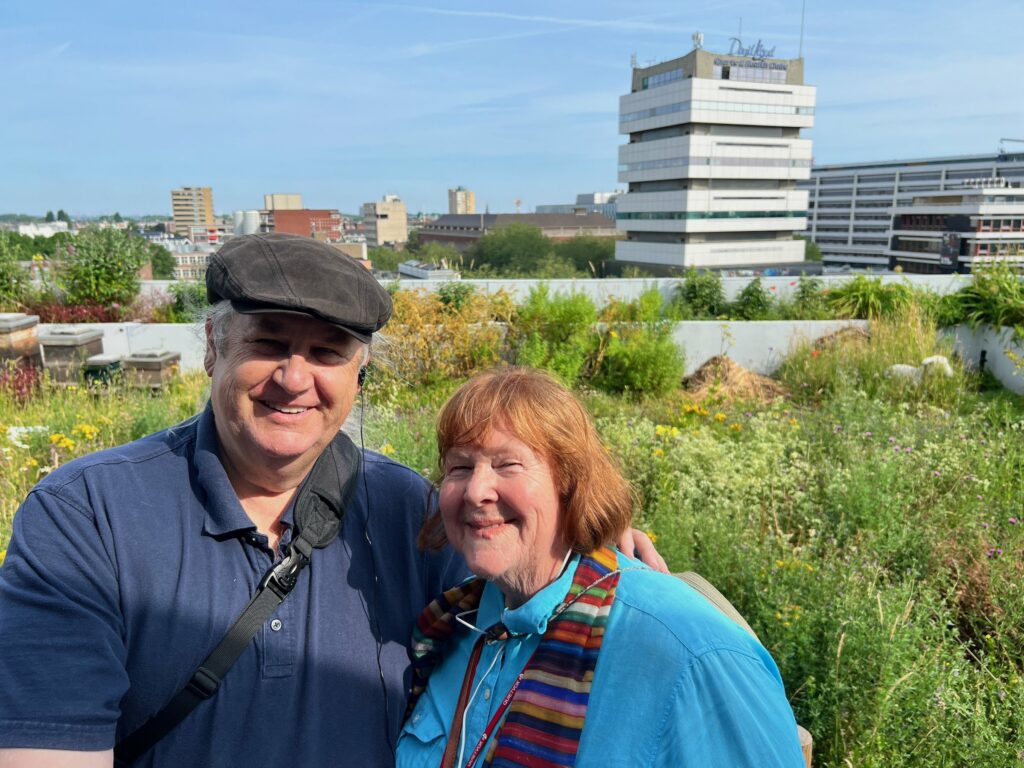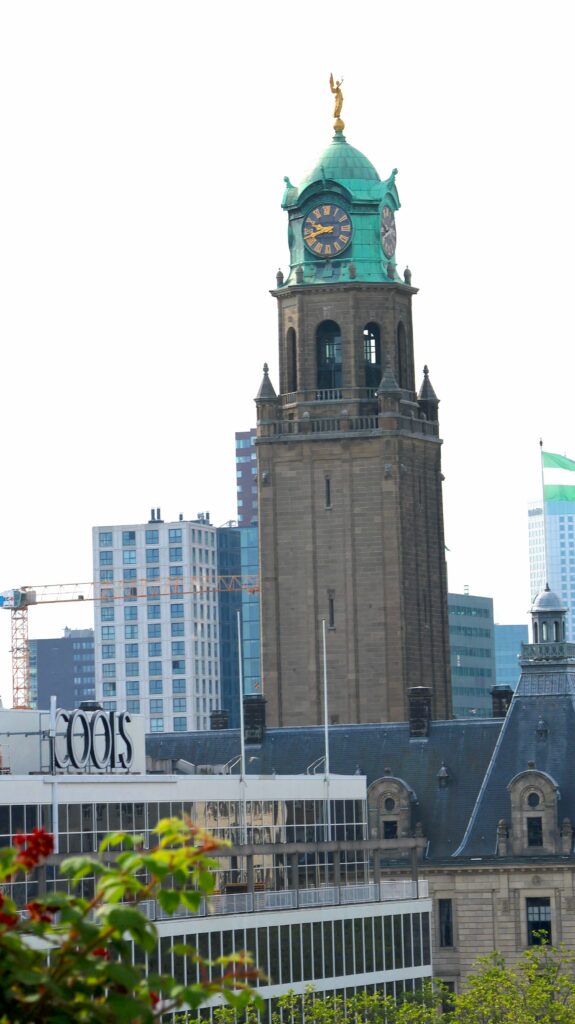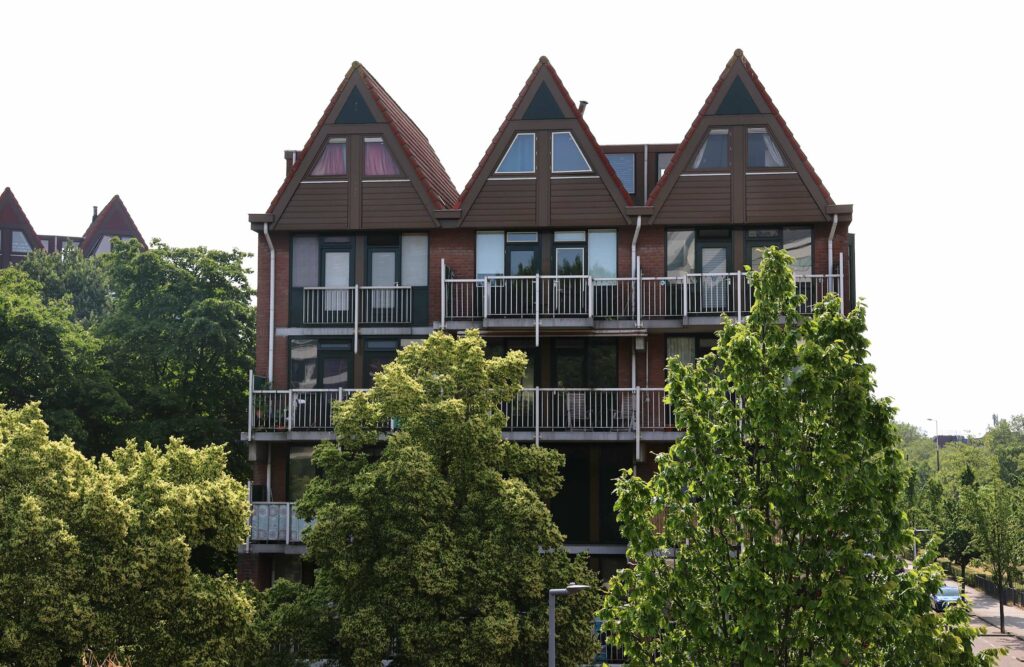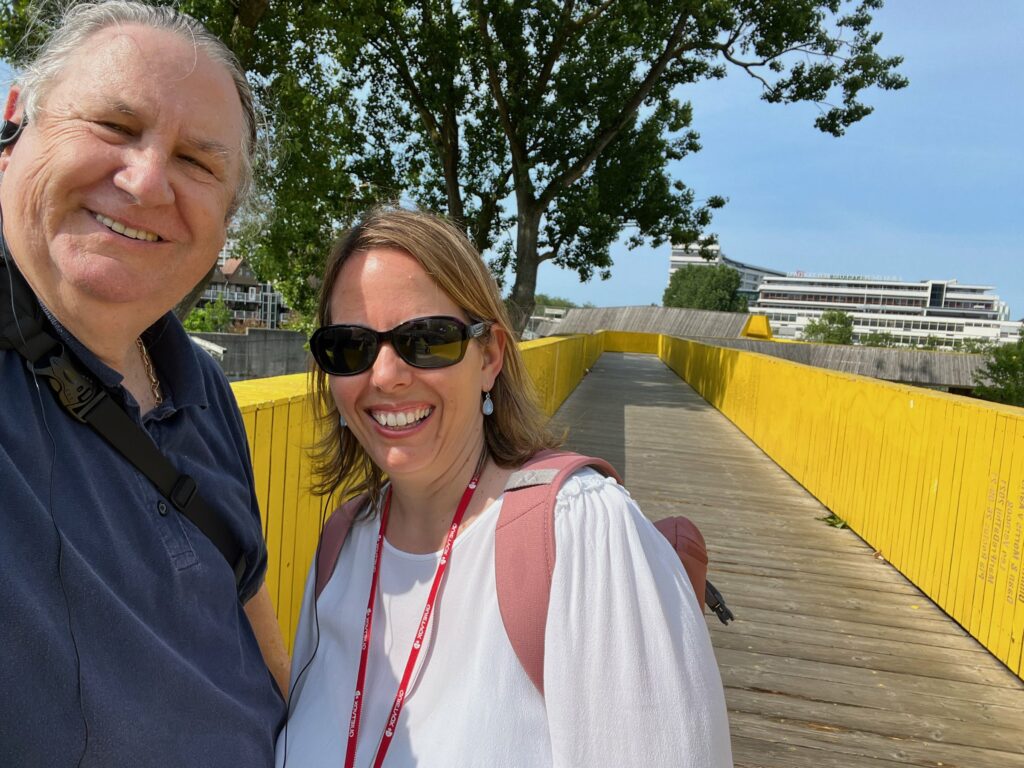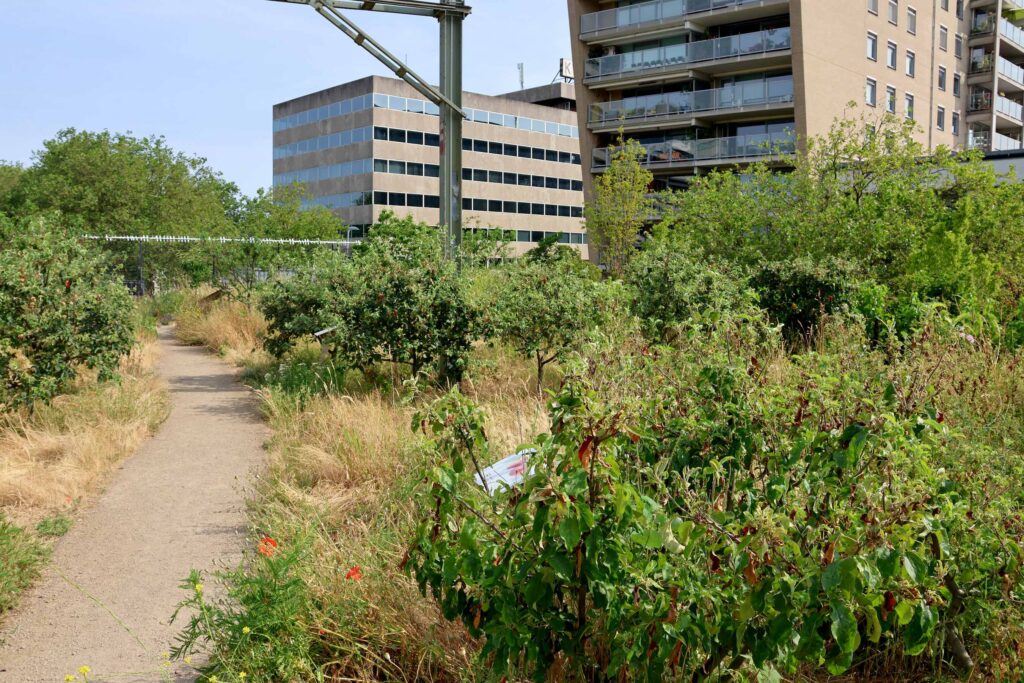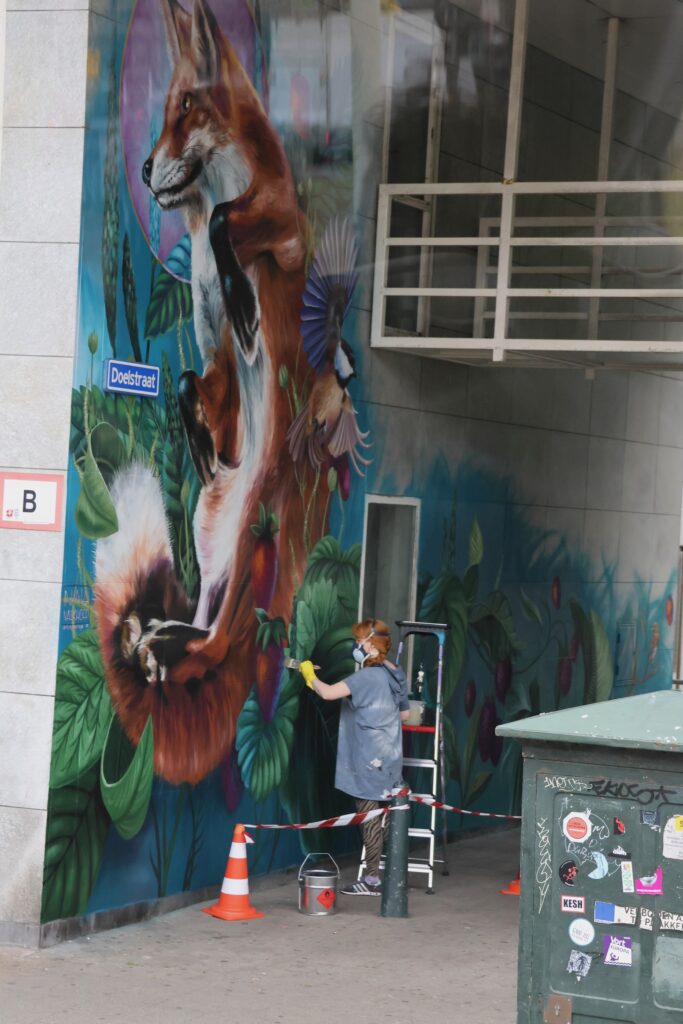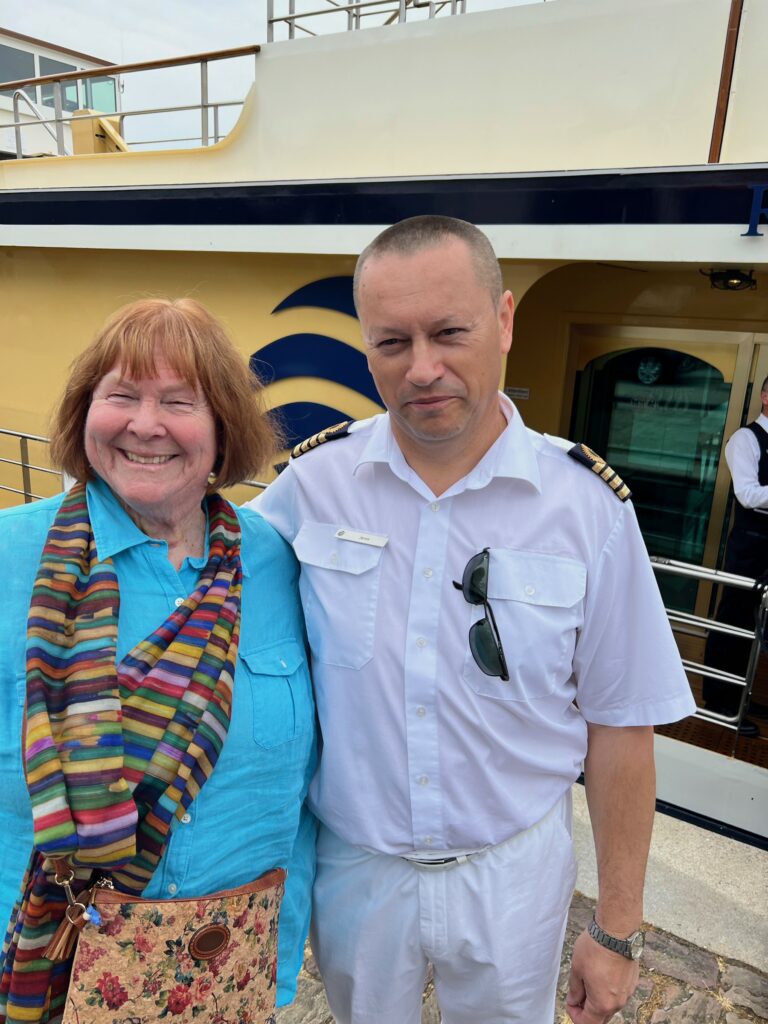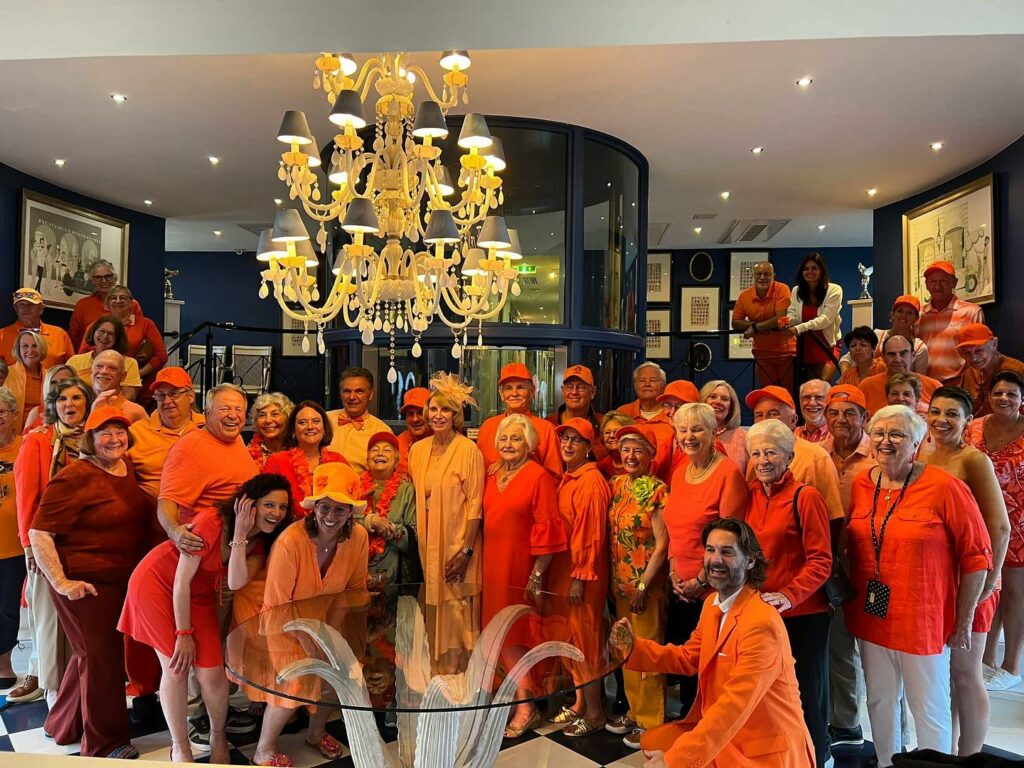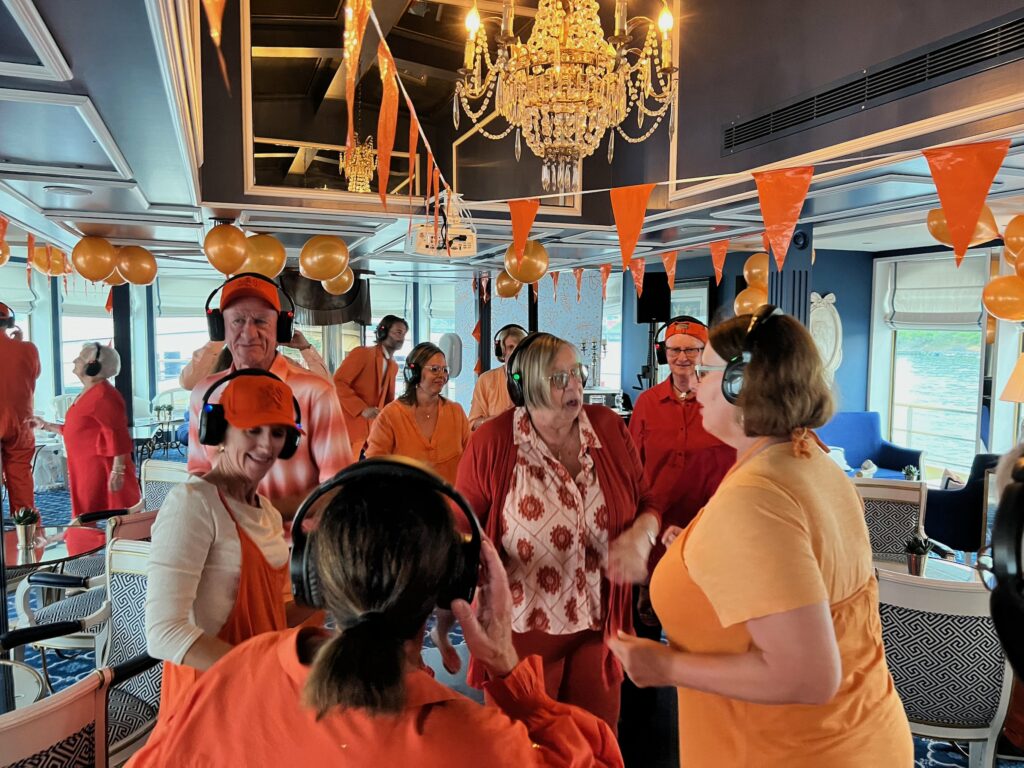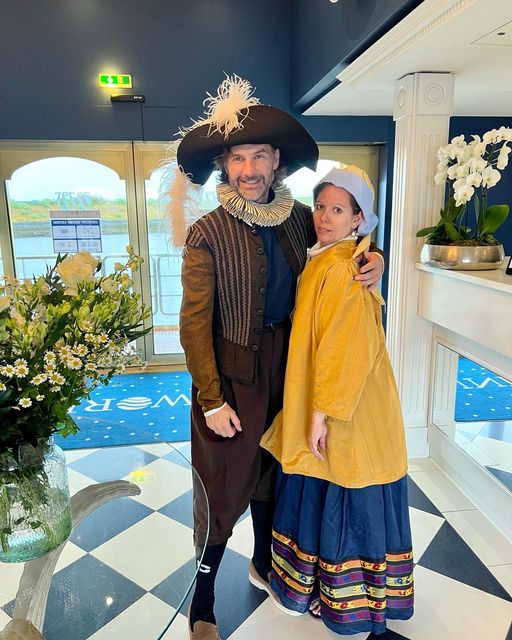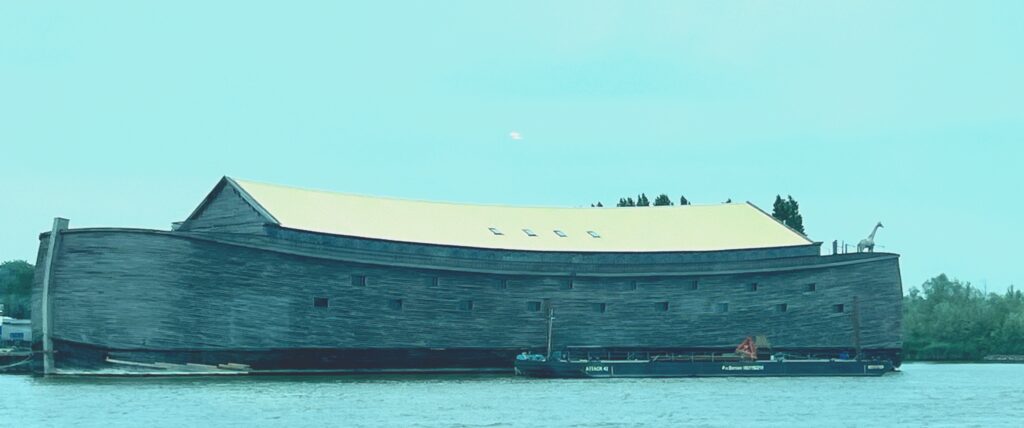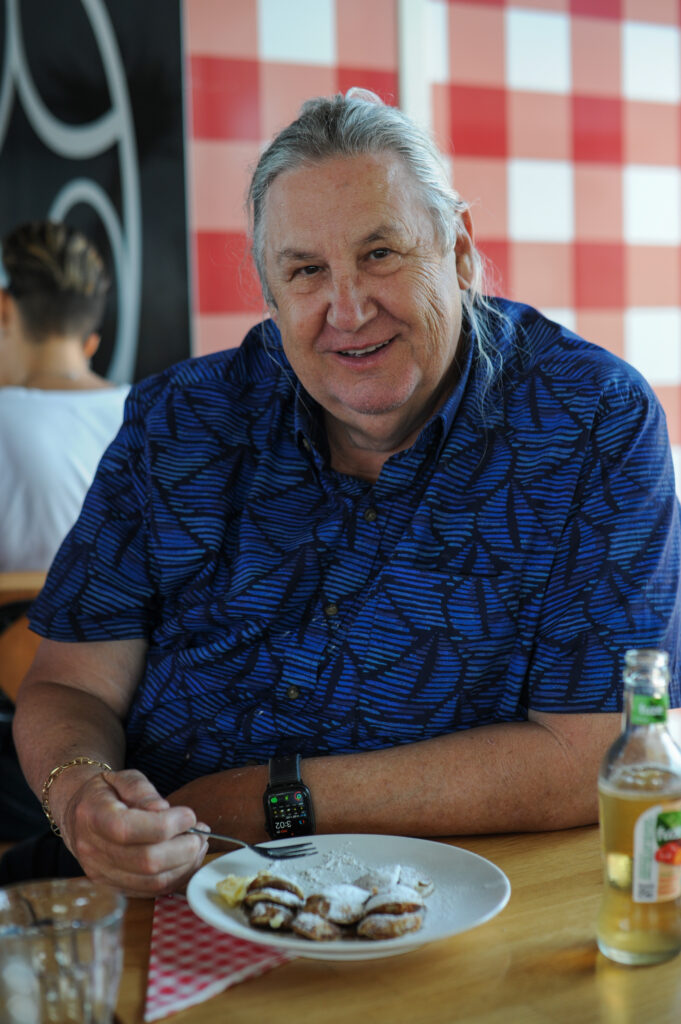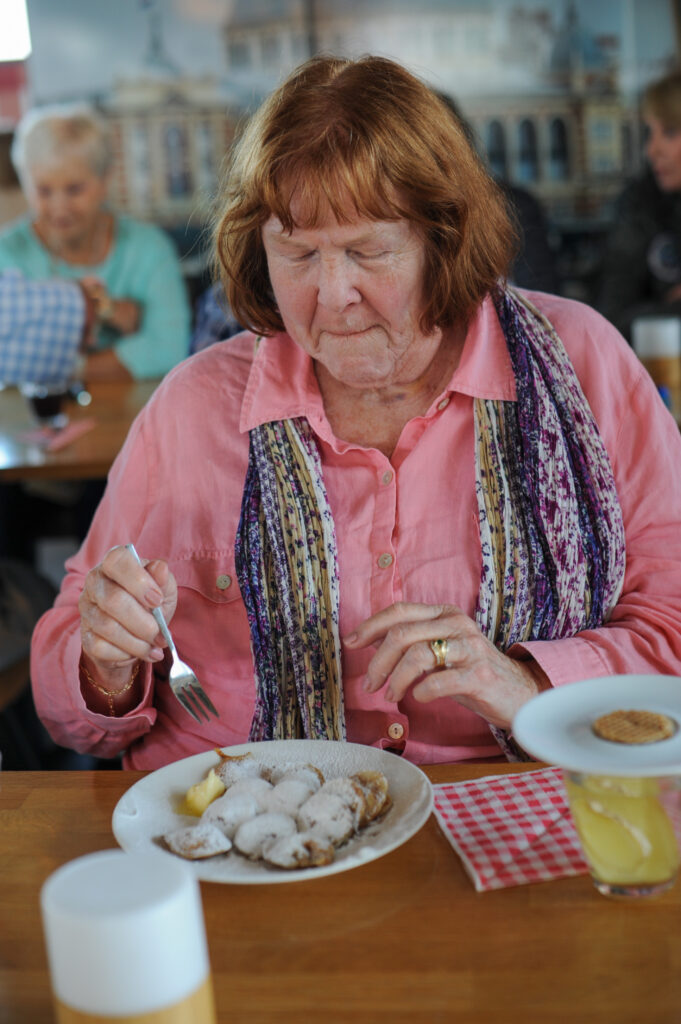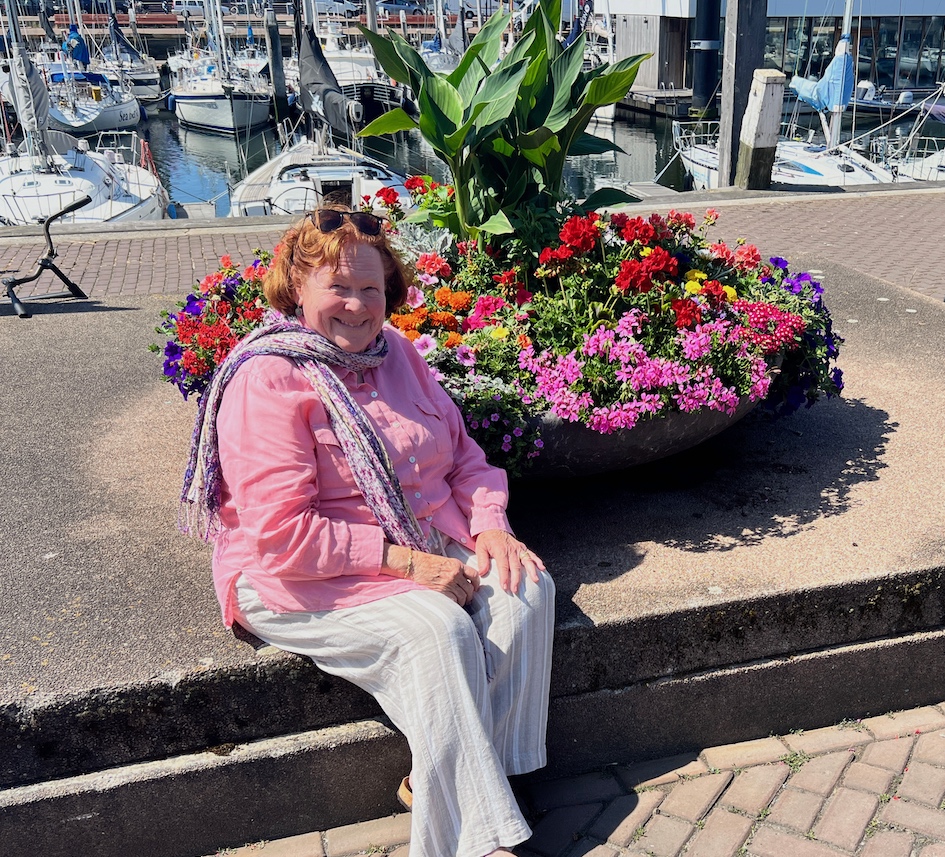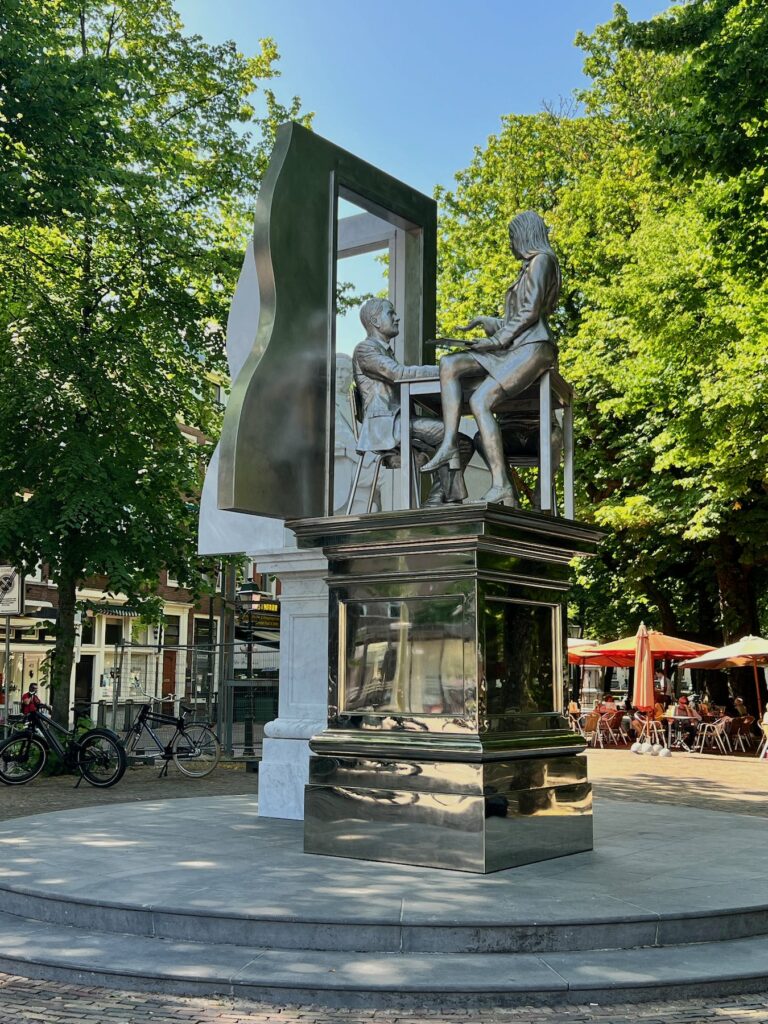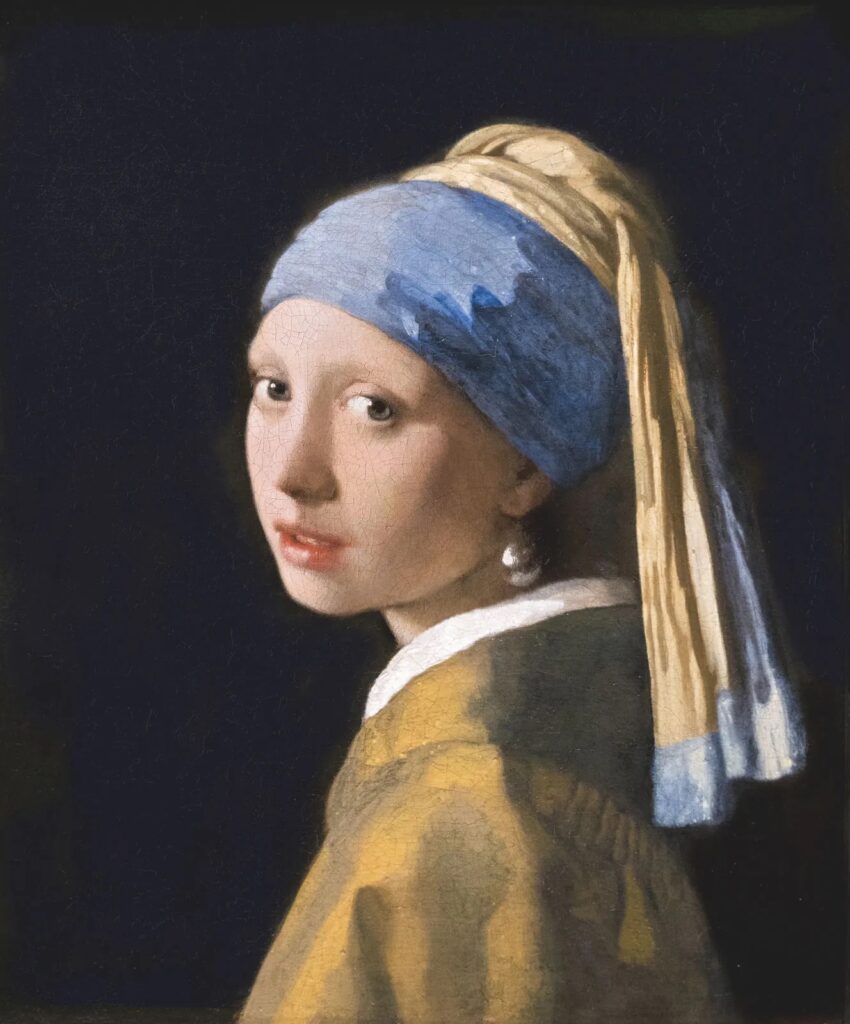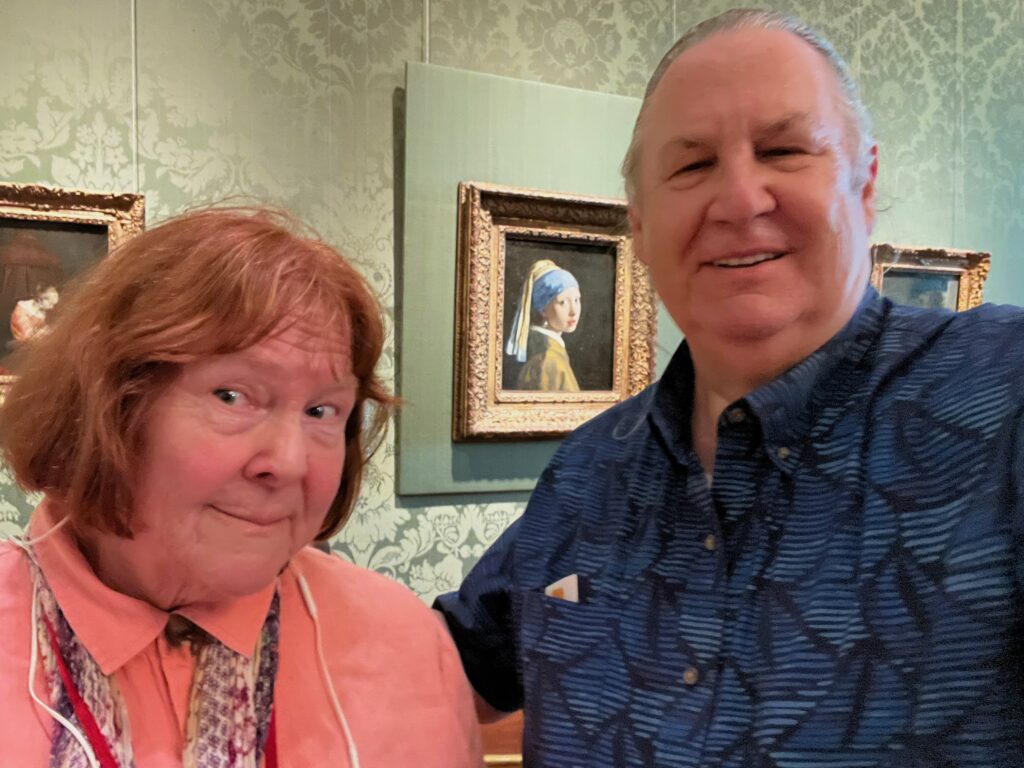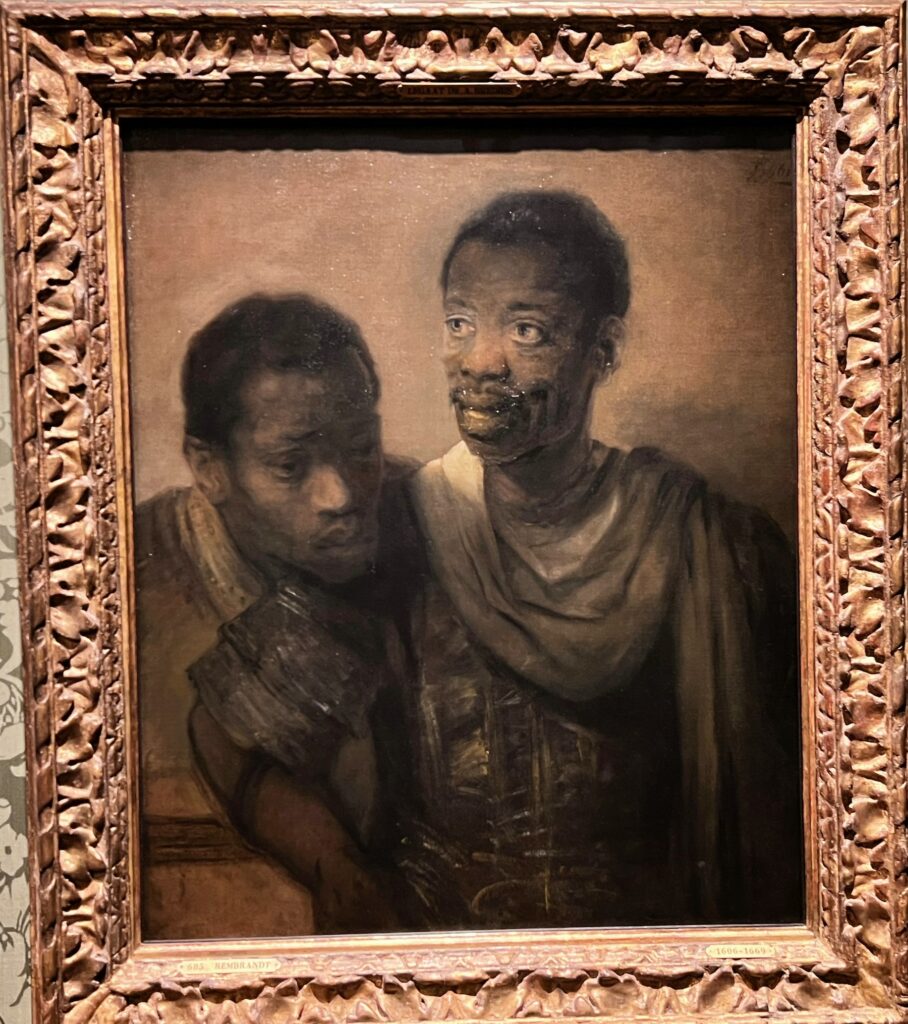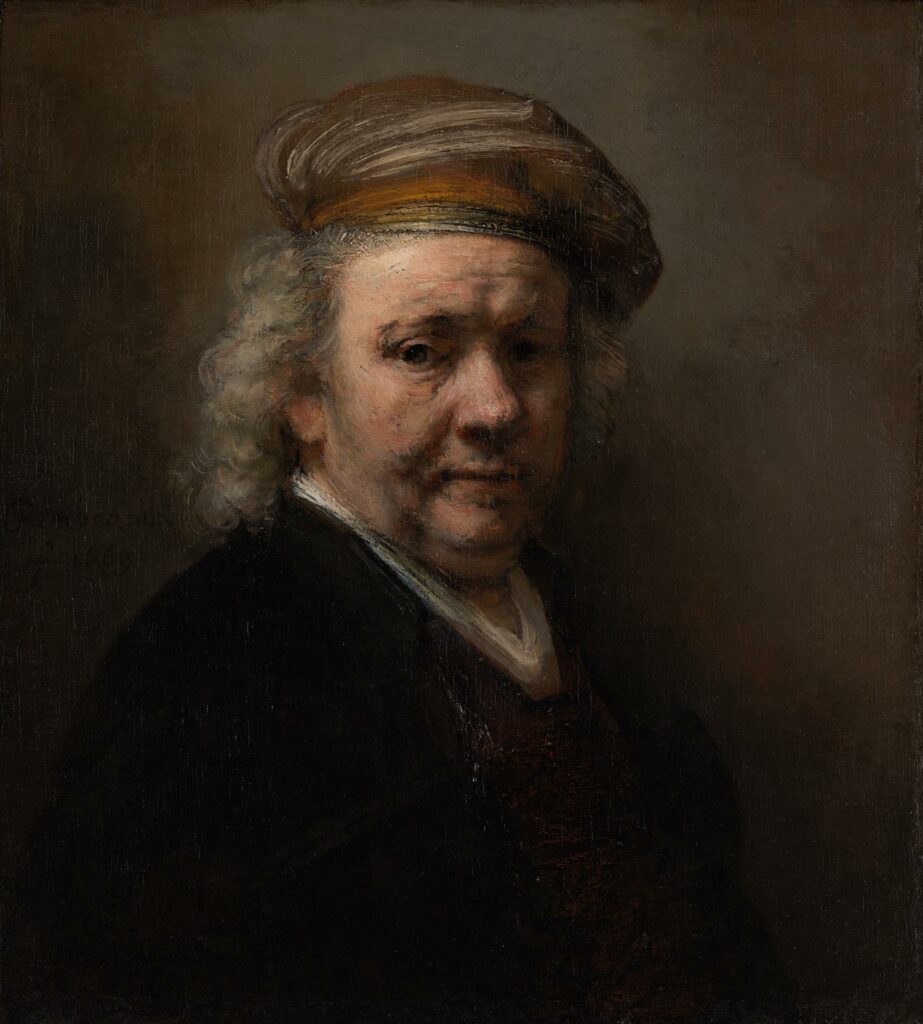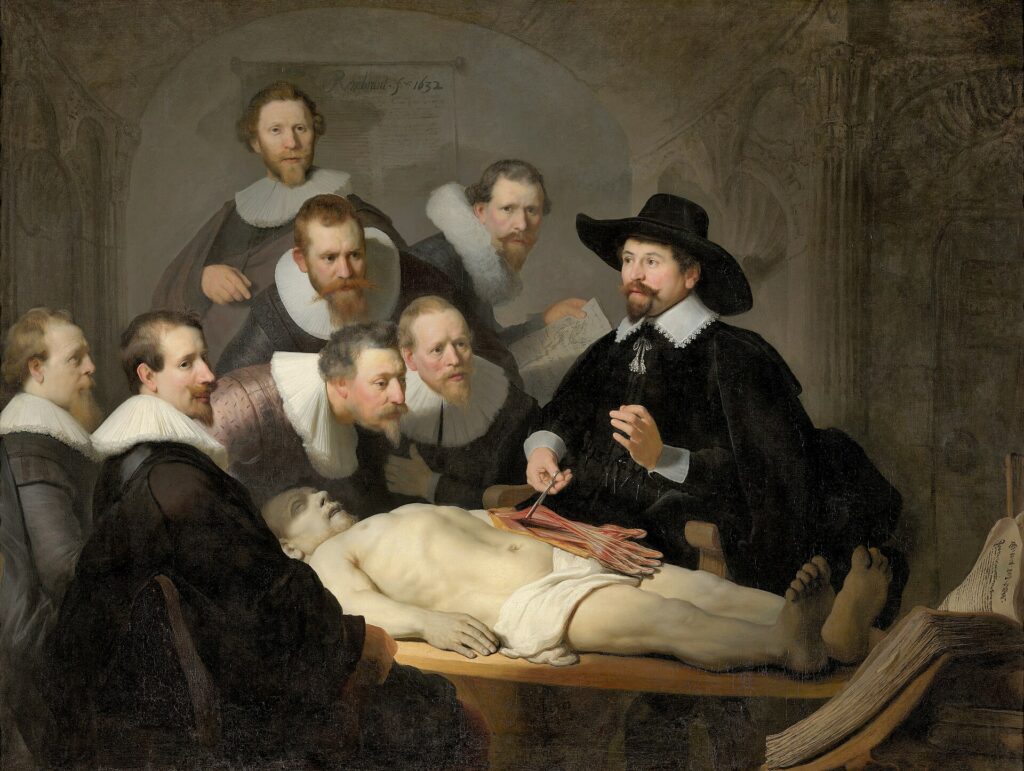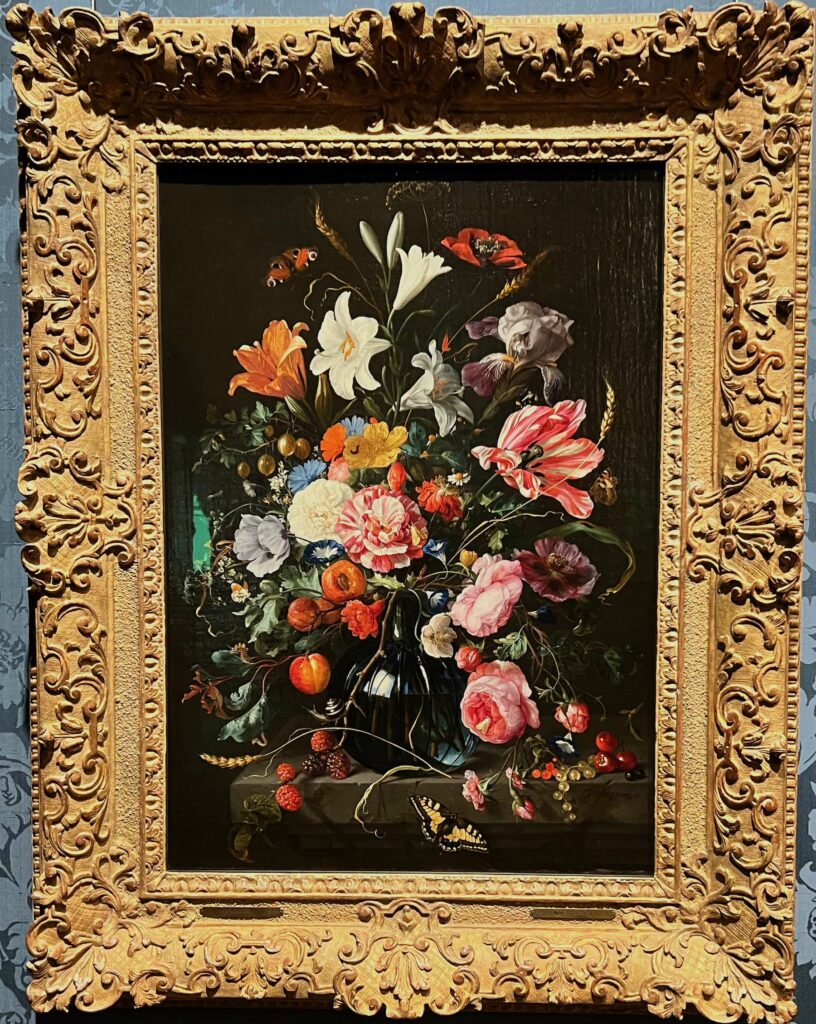We left Maastricht and motored all evening until we reached Cuijk. This is a town in the northeastern part of the province of North Brabant in the Netherlands. It resulted from a Roman settlement on the west bank of the river Meuse and has a population of just under 20,000. As this was Sunday, there really wasn’t a lot to do anywhere and the Mystery Cruise found a small windmill, a brewer to taste some beers and monastery to visit in this town.

The original windmill was constructed in 1860 and was operated for generations of the same family grinding grain for the local farmers.
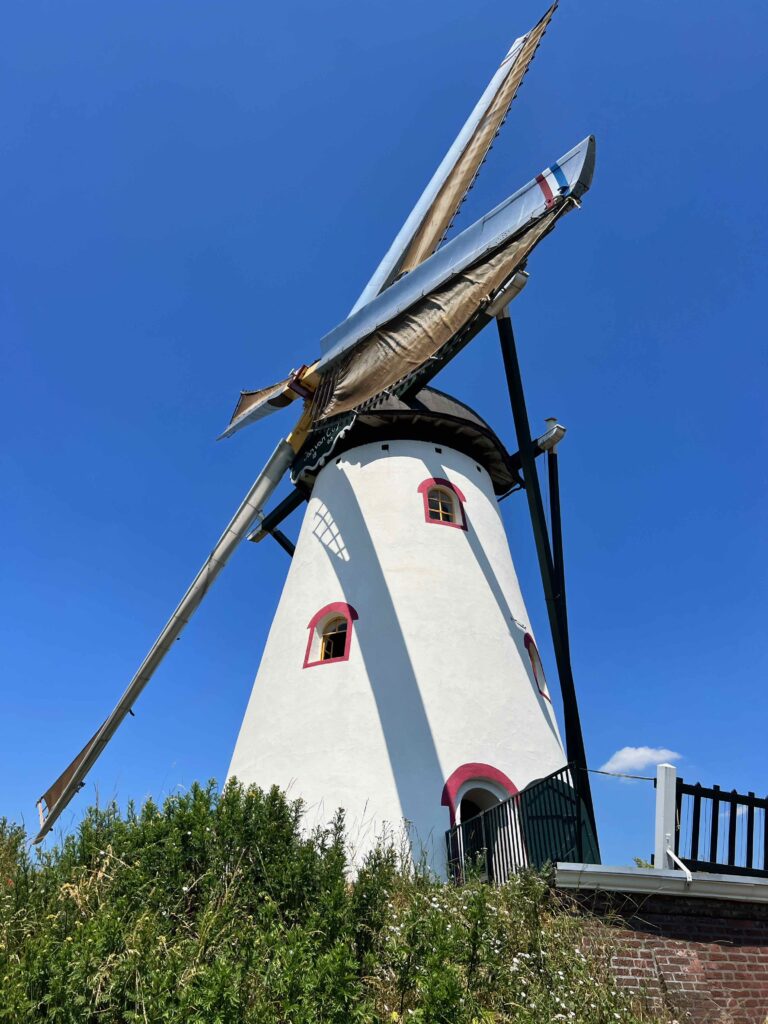
Over the years things hadn’t been maintained and in early 2000 it was fully restored using parts from dismantled windmills around the country. In 2012, the municipality of Cuijk took over the mill and it is now operated, under a lease arrangement, by the grandson of the last full time miller.
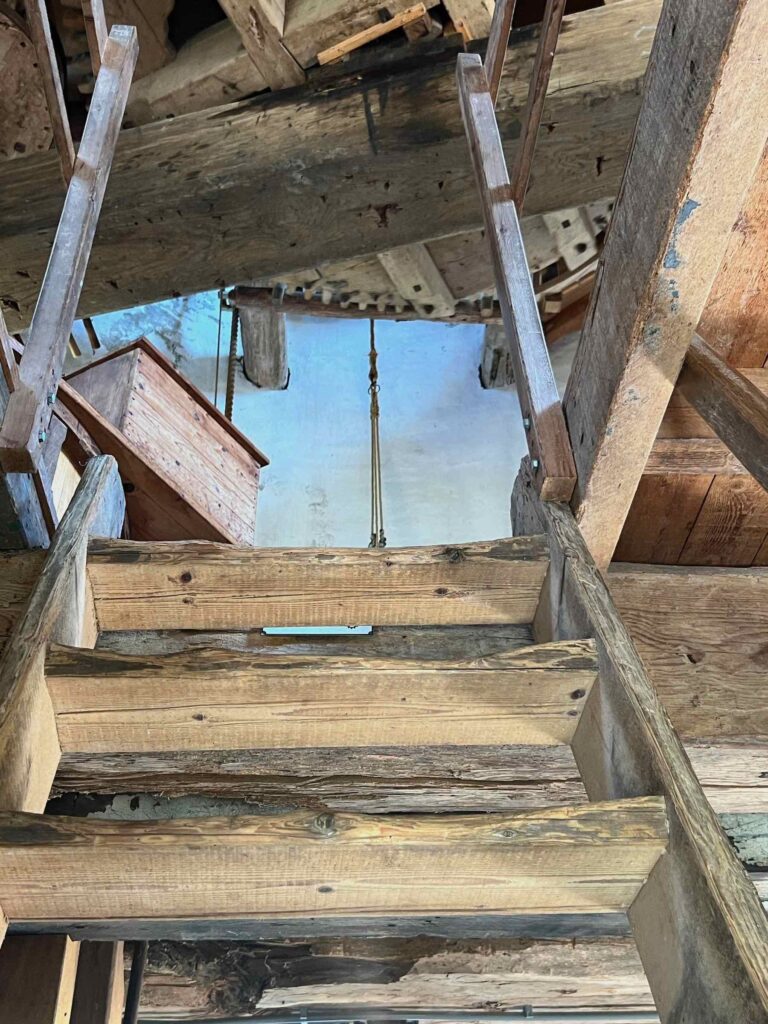


The stairs where a bit steep and worn for sure – but Janeen was able to peek at the top of the stairs.
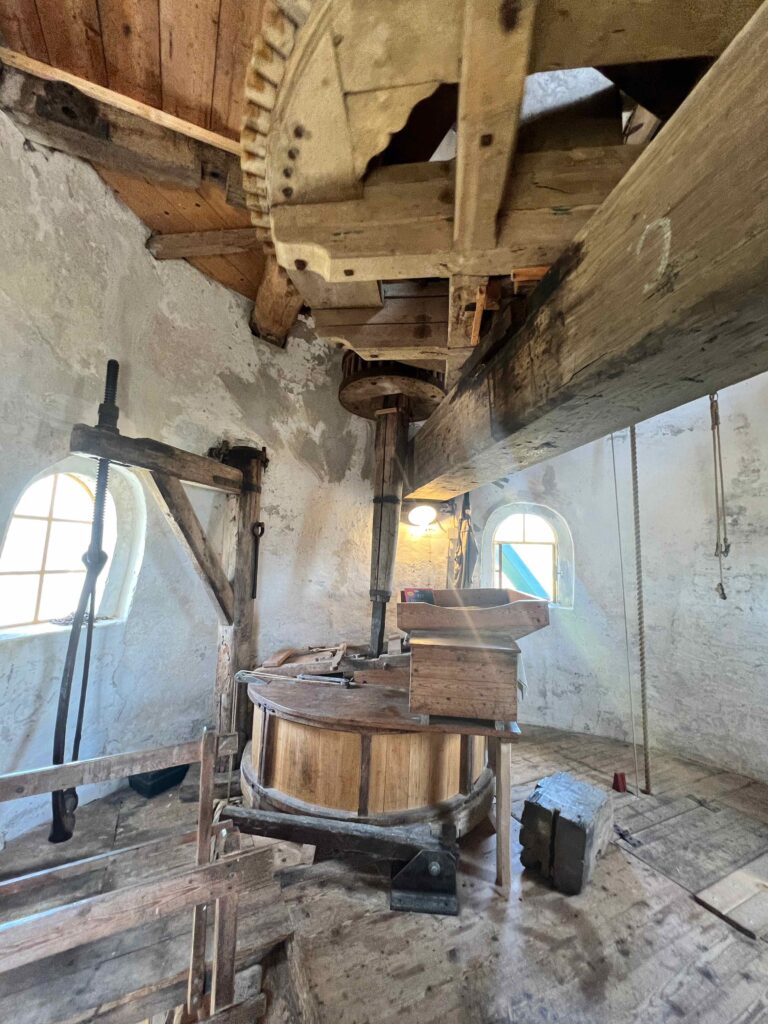
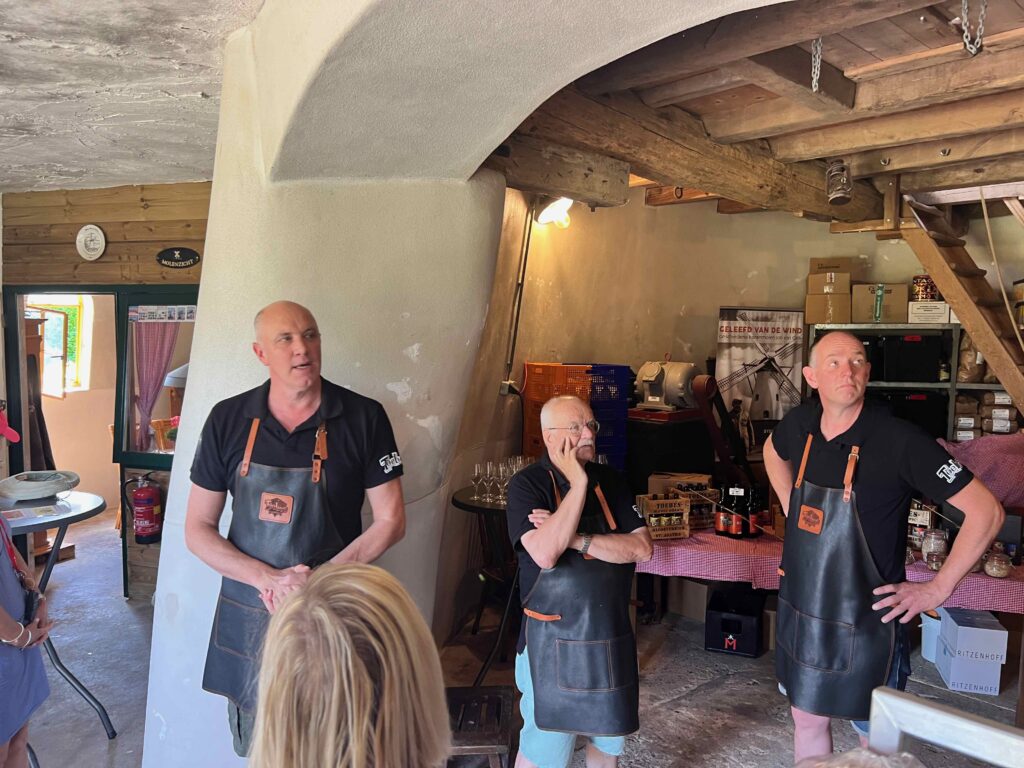

While visiting the windmill, we also samples 4 or 5 beers produced in the local Monastery. Apparently, these brewers are one of the last brewers making beer in an operating Monastery. Beer has been brewed in Brabant since time immemorial by monks and in the area around Land operated by the Monks of St. Agatha. The current brew masters are all volunteers and are trying to take the new beer, Toebes, in such a way to the revive the historic craft, and give a new dimension to the experience of a cozy special beer. The brewery combines nostalgic flavors with current trends. They have designed and built a 300-liter brew kettle ourselves. They brew many different beers and take the season into account. A good beer starts with a good one raw materials, and Toebes opts for biological malts and hops for the beer.
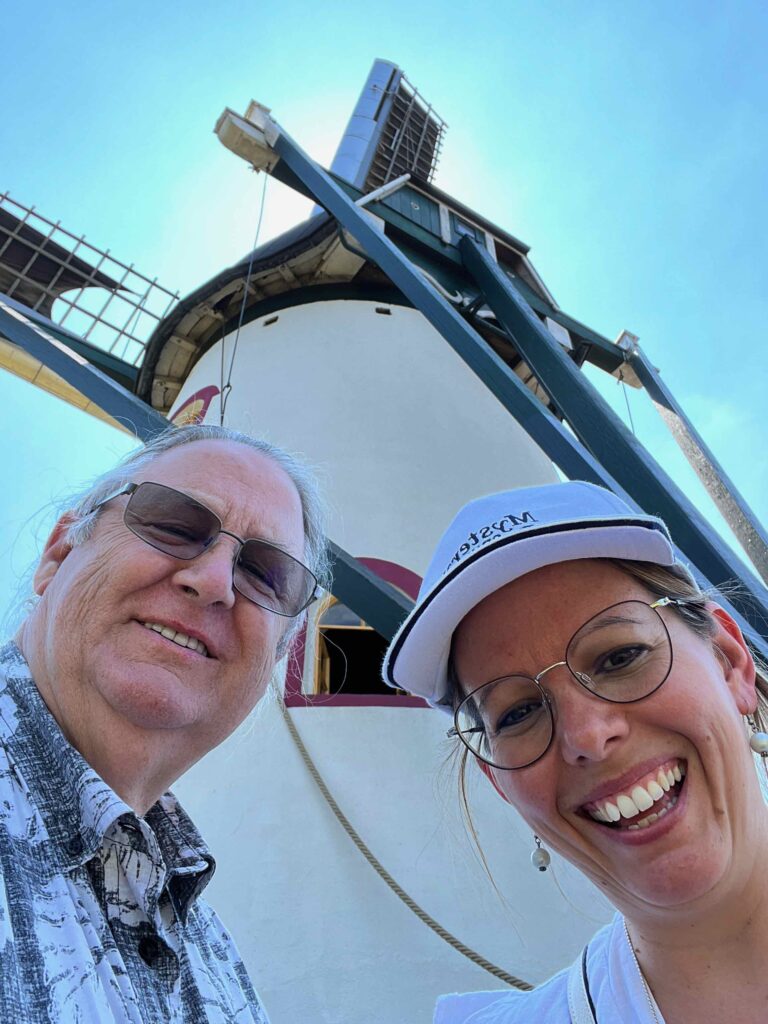

After visiting at the Windmill, onto the bus and off to the Monastery for a quick walk around.
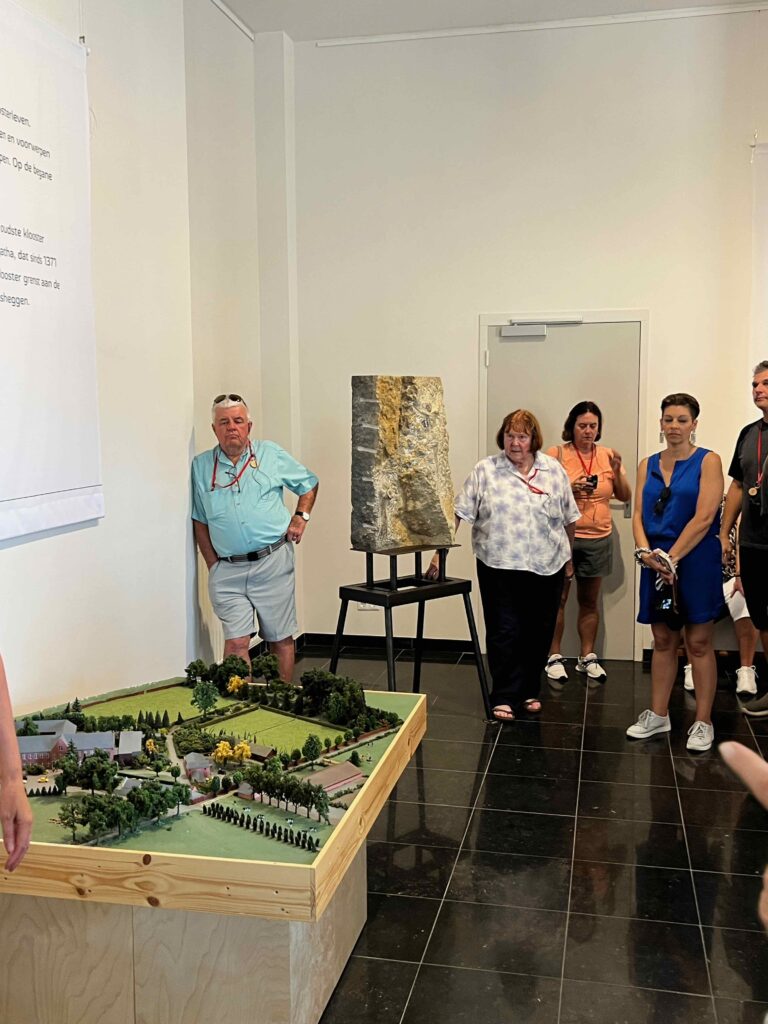
The Monastery of Saint Agatha was founded around 1371 with many missionaries being trained in this monastery. It is the oldest inhabited monastery in the Netherlands, although there are fewer than a dozen residents.
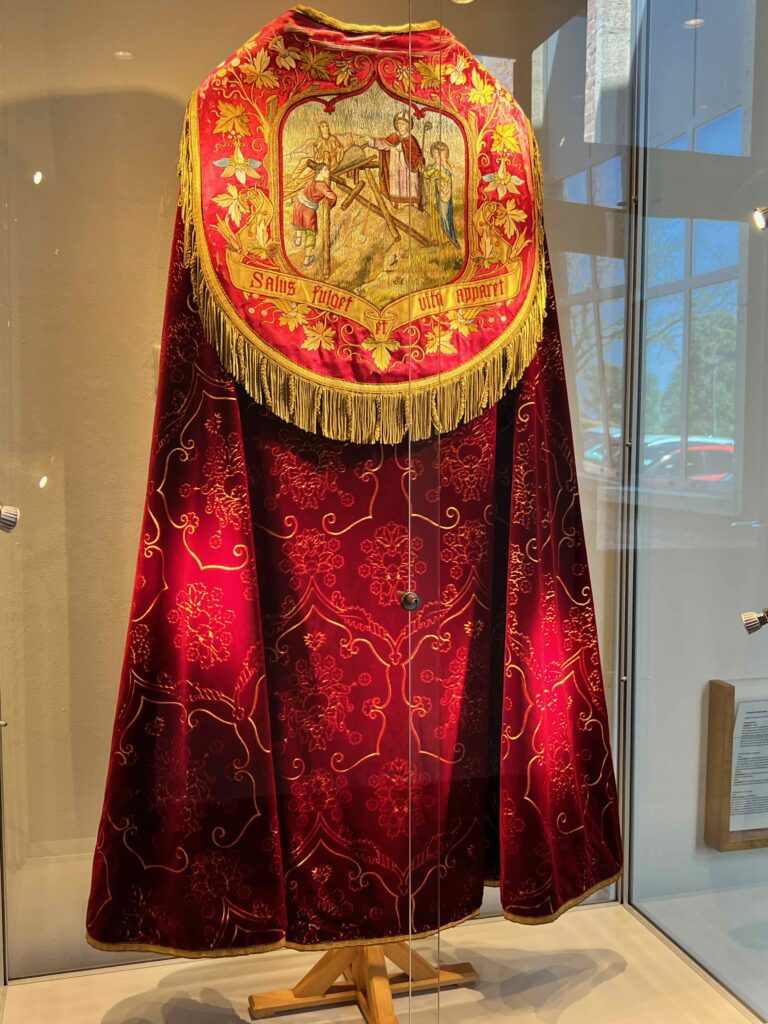


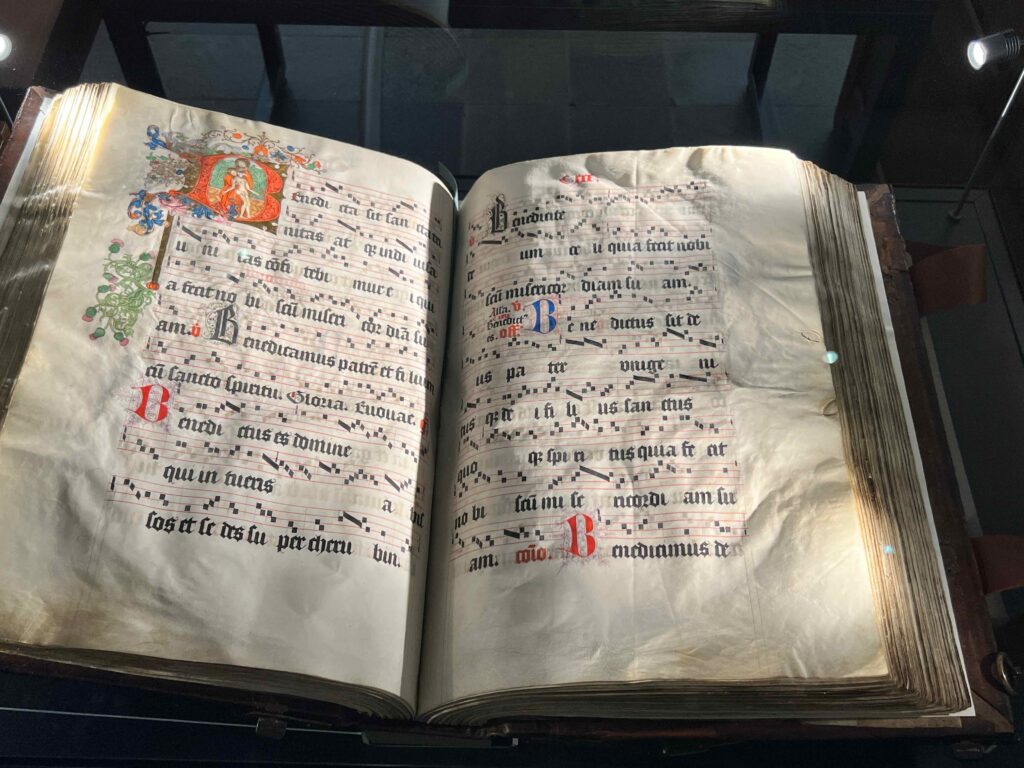
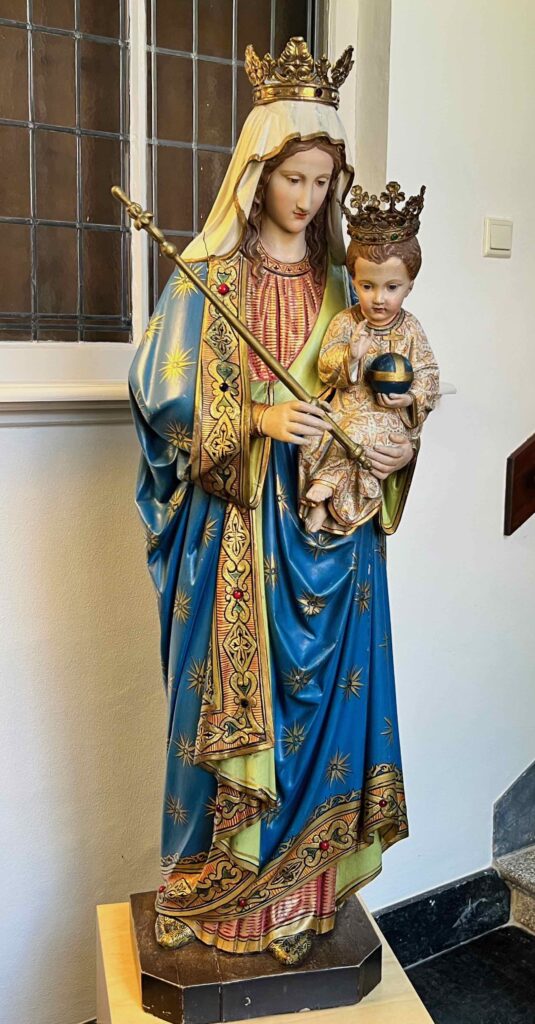
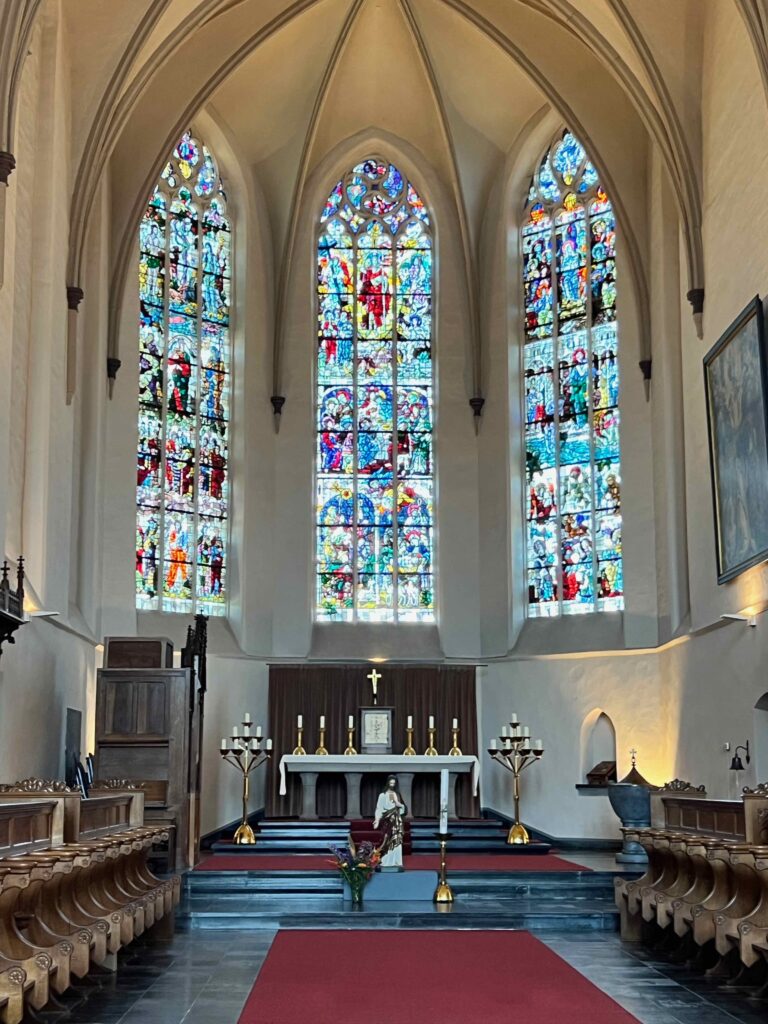
In June 2006, after a renovation of the monastery, some rooms were taken into use by the Center for Dutch Monastic Life, which houses the heritage collections of many monastic communities. The Center chiefly houses monastic archive documents, but also preserves and provides access to related books and artifacts. The Order of the Holy Cross themselves also house their heritage collections in Saint Agatha. There was a small chapel and library. One of their significant areas is a collection of books – many written by the Monks during the early years and are available for scholars to review and research.
